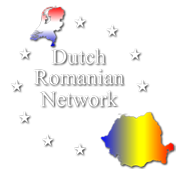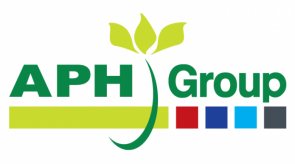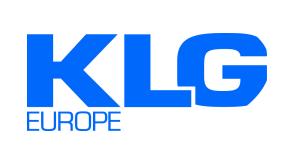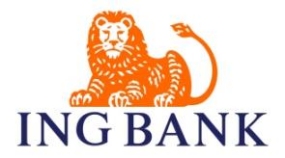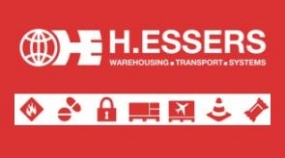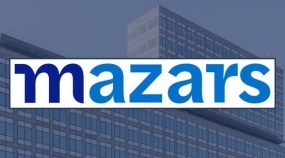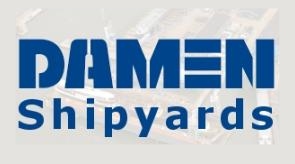Newsletter April-May 2024

DRN welcomes back new members and sponsor
Partly because of its entrepreneurial activity focused on the opportunities the Romanian sector offers to Dutch agricultural entrepreneurs, three companies have expressed their support through their membership and sponsorship to continue on this path. It is notable that these Dutch companies are already established in Romania, thus signaling their support for the choice they have made, but equally wanted to share this acquired knowledge and experience recently at the expert meeting in Venlo co-organized by DRN.
So we salute:
APH from Heerenveen
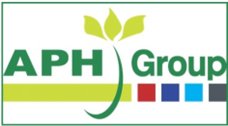 From their new location in Heerenveen, they do the marketing, sales and after-sales service for WIFO planters, Baselier row tillers and haulm toppers, Dewulf potato and vegetable harvesters, Bijlsma intake and sorting lines, Omnivent storage technology and Manter weighing & packing lines. APH Group achieves annual sales of about 45 million euros with 140 employees in 45 countries. In Romania, they operate from their offices in Târgu Secuiesc and Slobozia. Their activities cannot be summarized in a few words, so for that we refer you to their website https://www.aphgroup.com/en/de and the DRN is grateful for their support to make the aforementioned event possible!
From their new location in Heerenveen, they do the marketing, sales and after-sales service for WIFO planters, Baselier row tillers and haulm toppers, Dewulf potato and vegetable harvesters, Bijlsma intake and sorting lines, Omnivent storage technology and Manter weighing & packing lines. APH Group achieves annual sales of about 45 million euros with 140 employees in 45 countries. In Romania, they operate from their offices in Târgu Secuiesc and Slobozia. Their activities cannot be summarized in a few words, so for that we refer you to their website https://www.aphgroup.com/en/de and the DRN is grateful for their support to make the aforementioned event possible!
PAS Manure Storage Systems from Drachten
 As a company, PAS Manure Storage Systems has built a great reputation in the agricultural sector. Its name leaves nothing to chance: for years, PAS has been the contact point for everything in the field of manure storage. This includes supplying, building, cleaning, moving & inspecting storage systems and covers.
As a company, PAS Manure Storage Systems has built a great reputation in the agricultural sector. Its name leaves nothing to chance: for years, PAS has been the contact point for everything in the field of manure storage. This includes supplying, building, cleaning, moving & inspecting storage systems and covers.
Together with Jitze van den Berg (CEO Solliq Group), the tasks and shares are now being divided. Jaap Veenstra will become director and will also remain the direct point of contact. So he will continue to be closely involved in the company’s day-to-day operations.
Currently, 75% customers are still in the Netherlands and 25% abroad. However, seeing the livestock sector shrinking rather than growing in our country, they are moving to Britain and Romania.
For more information, please visit: www.pasmestopslag.nl
SC Cormana Machinery SRL
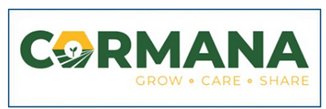 Cormana benefits from the experience and expertise of parent company GroeNoord in the Netherlands. GrowthNorth is the largest John Deere dealer in the Netherlands and, with 19 branches, one of the largest mechanization companies in the country.
Cormana benefits from the experience and expertise of parent company GroeNoord in the Netherlands. GrowthNorth is the largest John Deere dealer in the Netherlands and, with 19 branches, one of the largest mechanization companies in the country.
The market segments they focus on in Romania are arable farming, hemp farming livestock and loader technology. Leading the company is commercial director Jos Popken.
In Romania, one is based in the towns of Agnita and Fagaras. Around the end of December, it is hoped to expand the facility significantly. For further information including catalog, please visit the website https://cormana.ro/en/about-us/
Impression of Villaflora
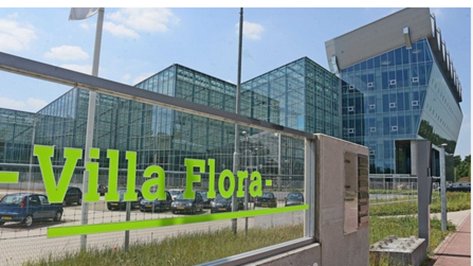 You can throw all kinds of keywords on it, crowded, tight organization there was the same “language” spoken among themselves despite differences in perception and experience. And when you speak the same “language” understanding arises more quickly and you listen and learn from each other. People who had a long drive for it from Friesland or a short flight from Romania. The short presentations were also fascinating and just to name one example was Edwin Warmerdam partner of Mazars managed to keep it understandable and short and his presentation can be viewed by clicking
You can throw all kinds of keywords on it, crowded, tight organization there was the same “language” spoken among themselves despite differences in perception and experience. And when you speak the same “language” understanding arises more quickly and you listen and learn from each other. People who had a long drive for it from Friesland or a short flight from Romania. The short presentations were also fascinating and just to name one example was Edwin Warmerdam partner of Mazars managed to keep it understandable and short and his presentation can be viewed by clicking
here
click here to read it again at your leisure. We are not going to mention everyone but would like to mention our hosts of Greenport Venlo Jerome Beijers and Marcel Claus because without their help we would not have made it, because a start with a Limburg flan does not happen to you every day and then we also mention the available rooms and the professional technical equipment.

Are we going to leave it at that? No, certainly not because on November 21 next we have already scheduled what is known as the Romanian Business Day, which will be a bit more extensive and in which other business sectors will also participate, but we are sure that the agricultural sector will be emphatically present as usual.
Quitting farmers deliver auction house Troostwijk a record year
Farmers doubt they can and will compete in the marketplace for the next 20 years.
Last year auction house Troostwijk organized 189 auctions of agricultural farm machinery, 93% more than the previous year.
The number of farmers who sold the entire farm at those auctions increased 17% in 2023.
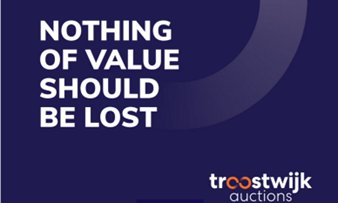 Whereas quitters used to be almost exclusively over 55, half of those who quit are now under 55.
Whereas quitters used to be almost exclusively over 55, half of those who quit are now under 55.
Digital auction house Troostwijk Auctions saw a 17% increase in the number of quitting farmers last year. The auction house attributes this to the growing uncertainty among agricultural entrepreneurs and the popularity of online auctions within the industry.
Troostwijk is one of Europe’s largest auction platforms for industrial machinery and goods. The company auctions entire farms of discontinued agricultural entrepreneurs as well as individual machines. This increased revenues by €17 mln compared to a year earlier. That made 2023 a record year for Troostwijk.
What is striking is the decreasing average age of the quitting agricultural entrepreneurs, according to account manager Stefan Hooijman of Troostwijk. Official figures are lacking because the auction house does not keep track of customers’ ages. But where previously stoppers were almost exclusively over 55, Hooijman now also sees many younger entrepreneurs selling the entire business. ‘I estimate that nowadays about half are younger than 55.’In conversations with agricultural entrepreneurs, Hooijman increasingly hears doubts about whether they will still want or be able to compete in the next 20 years. ‘Even among entrepreneurs between the ages of 30 and 45, who are just in the prime of their lives.’
Troostwijk expects the sales market for Dutch agricultural machinery to shift more abroad. The auction house is seeing increasing demand from outside the Netherlands. For example, demand from Slovenia (+36%), Romania (+34%) and Germany (+20%) rose sharply in the first quarter of this year compared with the same period a year earlier.
Land price
That more businesses are quitting now makes sense, says agricultural broker Jos Ebbers. Land prices peaked last year, allowing entrepreneurs to get a relatively good price when selling. The price per hectare of agricultural land rose 7.4% last year to almost 80,000 euros.
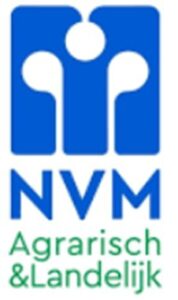 The Dutch Association of Estate Agents Agrarian & Rural saw an 11% increase in the number of agricultural businesses put up for sale. It involved 400 farms in 2023; 250 farms were actually sold. An aging population and the lack of business succession are causing agricultural entrepreneurs to sell their businesses to colleagues, according to the NVM. Others opt for a government-built termination scheme to reduce nitrogen pressure on sensitive wildlife.
The Dutch Association of Estate Agents Agrarian & Rural saw an 11% increase in the number of agricultural businesses put up for sale. It involved 400 farms in 2023; 250 farms were actually sold. An aging population and the lack of business succession are causing agricultural entrepreneurs to sell their businesses to colleagues, according to the NVM. Others opt for a government-built termination scheme to reduce nitrogen pressure on sensitive wildlife.
Uncertainty
Ebbers also points to the continuing uncertainty in rural areas. Meanwhile, the provinces have submitted plans on how they plan to improve soil and water quality, among other things, called area plans. “But even in that, only outlines have been sketched,” Ebbers said. “The translation into what it means for spatial planning has yet to begin.
Such uncertainties put pressure on farm finances, Ebbers said. ‘Agricultural businesses are no different from other businesses in this: to invest, they need clarity.’
2023 featured “land hunger” among farmers, Ebbers said. “Whether for scaling up and business development or for manure application, land is scarce,” writes the brokerage firm. Ebbers again expects more transactions in 2024 than in the previous two years.
Although official figures are not yet available, Hooijman at Troostwijk also sees the same trend continuing in the first quarter this year. “It is too early to say how 2024 will turn out, but in the first few months I see a lot of young quitters again.
Romanian farmers legally grow psychotropic plants on an area of more than 570 hectares. Production amounts to about 1,400 tons
Only two types of psychotropic plants, poppy and hemp, are legally grown in Romania, and these are controlled by the Directorates of Agriculture. Over 572 hectares of land are cultivated with these plants for which state subsidies are provided.
Romanian farmers’ interest in growing psychotropic plants is decreasing from year to year, although at the European level the trend is the opposite and Romania was one of the leading producers. There are still 34 farmers growing hemp for fiber on only 326.6 hectares, while hemp for seed has been selected by 32 farmers who have planted 241.5 hectares, according to the latest Economic Supply Ministry data.
In total, there are over 568 acres with hemp, while by 2022, fiber hemp alone would cover 707 acres. In 1990, Romania had 16,629 hectares of hemp and a production of over 72,100 tons. In fact, Romania was the third hemp-producing country in the world until 1990, but the inclusion of the crop on the list of narcotic plants reduced producer interest to zero. Moreover, because it is a crop that requires a lot of physical work, many were discouraged from cultivating.
On the other hand, in the rest of the EU, the plant is being grown in increasingly large areas, up to 33,000 hectares by 2022. The largest producer is France (over 70% of EU production), followed by the Netherlands and Austria.
Hemp is an important textile plant because of the special properties of its fibers that provide high potential production of more than 3,000 kg of fibers per hectare. The seeds (hemp fruits) can also have various uses: for the extraction of industrial and edible oil, for the manufacture of varnishes and paints and nutritious protein substitutes.
Who grows hemp in Romania
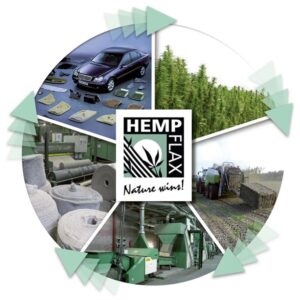 Data made available by the Agricultural Payments Agency show that 90% of the total hemp area is operated by three companies controlled by the Dutch HempFlax group, which also owns a construction materials production plant in Romania, in Alba Iulia.
Data made available by the Agricultural Payments Agency show that 90% of the total hemp area is operated by three companies controlled by the Dutch HempFlax group, which also owns a construction materials production plant in Romania, in Alba Iulia.
They are Agraficient SRL, Dronkers Ground SRL and Agro Paraiso Sebeş SRL which operate about 600 hectares in Sebeş, Pianu and Petreşti, Alba province, representing about 90% of the total area under hemp in Romania.
Local production was over 1,300 tons in 2023.
For fiber hemp cultivation, a transitional national aid – ANT 3, in the amount of 10.3763 euros per hectare is granted to farmers who meet the following specific conditions:
(a) operate an agricultural land with an area of at least 1 ha, where the area of the agricultural plot is at least 0.3 ha;
(b) the culture is maintained under normal growing conditions, according to the cultivation technology, for at least 10 days from the date flowering ends, so that the necessary controls can be carried out to determine the THC content;
This in the context where the areas used for hemp production constitute hectares eligible for ANT only if the tetrahydrocannabinol content in the varieties used does not exceed 0.3%.
Only 4.5 hectares of poppies
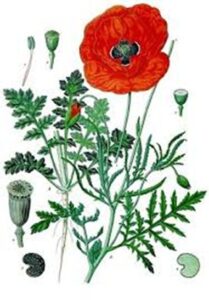 Besides hemp, poppies are also grown in Romania, on 4.5 hectares in 2023, grown by 22 local producers who obtained 2.46 tons.
Besides hemp, poppies are also grown in Romania, on 4.5 hectares in 2023, grown by 22 local producers who obtained 2.46 tons.
We mention that in Romania, until May 10 of the current year, the cultivation of plants containing narcotic and psychotropic substances (poppies and hemp) is allowed only on the basis of cultivation permits issued by the provincial agricultural directorates.
On May 15, 2024, the provincial and Bucharest agricultural directorates communicate the centralization situation with the licenses issued for the current year to the Ministry of Agriculture and Rural Development and to the central formation to combat drug trafficking and illegal drug use within the General Inspectorate of Agriculture.
Dayseaday fish wholesaler opens new building in Bucharest
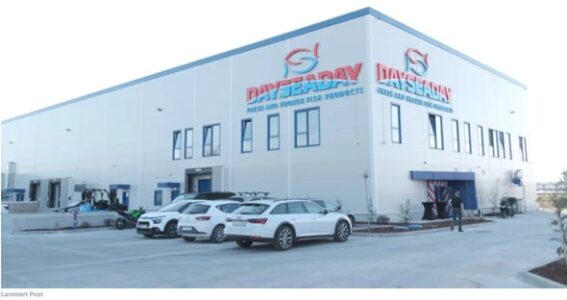 The Dayseaday Group the family business Van Veen has opened its new branch in Romania. The Van Veen family flew to Bucharest Friday morning together with a delegation of Flynth accountants, a total of 42 people from Urk. Saturday was spent flying back.
The Dayseaday Group the family business Van Veen has opened its new branch in Romania. The Van Veen family flew to Bucharest Friday morning together with a delegation of Flynth accountants, a total of 42 people from Urk. Saturday was spent flying back.
CEO Jelle van Veen said at the opening he was proud of his team and thanked manager Bogdan Manoliu who is also a co-shareholder of Dayseaday Romania. ,,A beautiful coolstore we have been able to realize. The most modern in Romania, with a storage capacity of 2,500 pallets for frozen food in two cells and several cold stores. We also have a freezer cell for meat storage.”
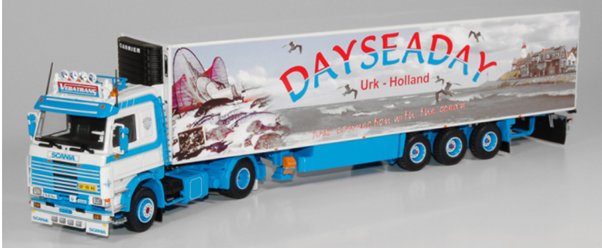 In 2012, Dayseaday acquired the (Dutch) fish company Oceanis Seafood on the south side of Bucharest. A new building measuring 100 by 30 meters was started last year on the northern ring road.
In 2012, Dayseaday acquired the (Dutch) fish company Oceanis Seafood on the south side of Bucharest. A new building measuring 100 by 30 meters was started last year on the northern ring road.
What is new is that fresh packaging (MAP) for the retail market is now available. The number of staff has grown to thirty. The production space measures 450 square meters.
Most of the fish at Dayseaday Romania is imported and involves farmed fish. Runners-up are sea bass, dorado, salmon, farmed shrimp. Hake is the most important species as far as wildlife is concerned.
Spakenburg
 Dayseaday Group also continues to expand in the Netherlands.
Dayseaday Group also continues to expand in the Netherlands.
In Bunschoten-Spakenburg, the new building of subsidiary Muys Seafood was inaugurated last month. Here on the Neerduist is 2,200 square meters built up.
World Bank recommends reducing aid to livestock farmers to combat climate change
Rich countries should reduce financial aid to the livestock sector, with the idea of helping reduce the pollution caused by the consumption of red meat and dairy products, according to the World Bank and Bloomberg.
Including environmental and health costs in the prices of carbon-intensive food products of animal origin would reduce consumer demand for those products. This would mean shifting subsidies from the livestock sector to sectors with lower emissions, such as poultry farming and fruit and vegetable production, according to a World Bank report on reducing the climate footprint of the food sector.
 ‘We are not saying that public support for agriculture should be reduced. We think it should be used in a more efficient way so that it actually contributes to healthier food and a healthier planet,” said report author Bill Sutton.
‘We are not saying that public support for agriculture should be reduced. We think it should be used in a more efficient way so that it actually contributes to healthier food and a healthier planet,” said report author Bill Sutton.
From farm to fork, food systems are responsible for nearly a third of global greenhouse gas emissions. Livestock production is a major source of greenhouse gas emissions and high-income countries are among the largest consumers, but the sector lags far behind other sectors in terms of financial commitments, targets and actions. If the impact of food on climate is not solved, the planet will not reach its climate goals, warns the World Bank.
According to the report’s authors, annual investments must be increased 18 times, to $260 billion, to halve emissions from the agrifood sector by 2030 and help the planet reach its goal of zero emissions by 2050. But the returns will far outweigh the costs, the World Bank report emphasizes.
Governments, businesses and citizens can expand their supply of low-emission food options through various measures such as information and communication campaigns, promotional techniques or food labeling, claims the World Bank.
Including all costs in the price of animal-based food products would make options with lower emissions more competitive, while meat-based products would cost 20% to 60% more, World Bank experts estimate.
A third of farm subsidies went to meat and dairy products in 2016. A study by Leiden University and Chatham House found that over 80% of EU agricultural subsidies go to carbon-intensive animal products.
‘The food system needs to be fixed because it is making the planet sick and is a major component of climate change. Actions can be taken now to make the agri-food sector a greater contributor to fighting climate change and healing the planet. These actions are available and accessible,” World Bank experts stress.
What will happen to the pork market this year? There are signs of recovery, but grain harvest will have its say
 According to a latest report by the European Commission, pork production in the EU will decrease by 0.4% in 2024 compared to 2023, due to strong demand.However, the fall in feed prices caused a slight increase in carcass weight (+0.7%). In contrast, the December 2023 livestock survey shows that the number of breeding sows increased again by 170,000 head.
According to a latest report by the European Commission, pork production in the EU will decrease by 0.4% in 2024 compared to 2023, due to strong demand.However, the fall in feed prices caused a slight increase in carcass weight (+0.7%). In contrast, the December 2023 livestock survey shows that the number of breeding sows increased again by 170,000 head.
‘This could indicate the beginning of a recovery after three years of significant declines. But behind the growing number are huge differences between EU countries. The number of piglets also increased. On the negative side, the current stock of fattening pigs is lower than last year’s and is not expected to have a negative impact until the first half of 2024,” think European Commission analysts who estimate that the African swine fever situation will not dramatically improve either.
Instead, its analysis shows that feed prices could rise again, depending on the outcome of the upcoming harvest.
As for the first months of the year, losses were reported for eight member states, up to 19.5% in the case of Luxembourg, while the rest slaughtered up to 11.5% more heads. In the January-February period, Romania slaughtered 0.4% more than in the same period last year.
Prices fall
However, the slightly declining production did not lead to an increase in prices, which are lower than last year, by 8.9% if we look at the average price in the EU, which reached 221.7 euros per 100 kilograms of carcass.
In Romania, S-type carcasses reached 218 euros per 100 kilograms of carcass at the farm gate on May 2, which is 9.7% cheaper than in the same period last year and 6.3% below the price a month ago.
Europe produces about 18% of the world’s pork production and is the second largest player in this market, after China, which generates 46% of global production. However, given reduced supply and high, less competitive prices, the performance of EU exports is once again in jeopardy, after a 2023 with declines of 24.6% or nearly 1 million tons compared to the previous year.
At the same time, Chinese pork production is recovering and therefore imports are being reduced. Moreover, according to data from the European Commission, the Chinese pork market is currently experiencing oversupply (in the short term). If EU prices remain high, EU exports to China could fall further by 4% by 2024
However, the EU lost exports to both high-value (US, Japan, Australia) and low-value markets (Philippines and Angola) due to strong price competition from the US and Brazil. Only the British market showed a slightly positive development (+1.4%).
And the beginning of 2024 is not promising. In January, the EU shipped 365,000 tons of carcass across its borders, compared to 403,000 tons a year ago (minus 9.6%). The largest quantities (100,000 tons, 22.7% less than the same period last year) were shipped to China, Britain swallowed 73,000 tons, 0.9% more than last year, and Japan another 32,000 tons, 16.4% less than in January 2023.As for imports, they come mainly from Britain, but quantities could remain low in 2024, after falling 25% in 2023.
By 2023, pork production in the EU will have fallen by 6.6%. With the exception of Bulgaria, all other EU countries recorded declines, with Romania reporting a minus 1.1% in the number of heads slaughtered. The largest decreases were recorded in Denmark (-19.9%, -321,000 tons), Germany (-6.8%, -307,000 tons), the Netherlands (-13%, -220,000 tons) and (-4.2%, -214,000 tons).
Transport and Logistics Sector
KLG Europe – Sustainable chairs and sustainable transport to Romania
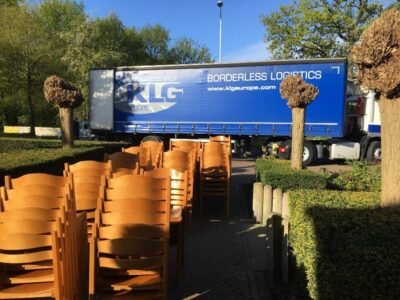 On April 15, j; we transported 130 church chairs to Romania. This in cooperation with PKN church in Best. The church chairs are now unsuitable because today the church is used for multiple purposes, so chairs need to be flexible. The old (solid but heavy) chairs are now going to two destinations in northeastern Romania. One portion goes to a church in Campulung Moldovenesc (near the Moldovan border). The other part of the chairs will go to a daycare for young people with autism in Iasi (ANCAAR). The Foundation set up this day care program because there was no day care for young people with autism who do not go to school (anymore).
On April 15, j; we transported 130 church chairs to Romania. This in cooperation with PKN church in Best. The church chairs are now unsuitable because today the church is used for multiple purposes, so chairs need to be flexible. The old (solid but heavy) chairs are now going to two destinations in northeastern Romania. One portion goes to a church in Campulung Moldovenesc (near the Moldovan border). The other part of the chairs will go to a daycare for young people with autism in Iasi (ANCAAR). The Foundation set up this day care program because there was no day care for young people with autism who do not go to school (anymore).
The Foundation
Ancora Foundation has been active in Romania for over 20 years and is a Christian non-profit organization,working in Romania and Moldova. The Foundation provides assistance to people in difficulty regardless of race, religion and nationality. From both foundations (PKN church in Best and Ancora), the project of the church chairs was set up and KLG Europe was asked for a donation in the form of transportation.
Donation transport
KLG Europe brings the seats to Romania free of charge. This is done sustainably as the chairs are combined with other loads. From the Venlo branch, church chairs are taken to the branch in Romania. Once all the seats have arrived in Bucharest, this cargo is combined into one freight and the seats are taken to their final destination.
H.Essers builds its first zero-emission warehouse for Agricover Distribution
H.Essers, a European logistics service provider, announces the construction of a warehouse for plant and seed protection products for Agricover, one of the key players in the Romanian agribusiness market. The new 10,000 m² project, located at H.Essers’ Seveso standard site in Bolintin Deal(jud.Giurgiu), strengthens Agricover’s logistics capabilities and marks a new phase in the cooperation between the two companies.
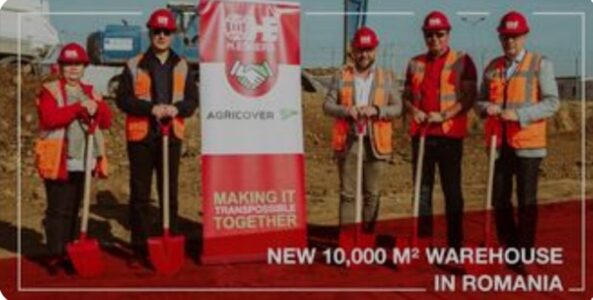 The cooperation between Agricover and H.Essers began in 2023, to provide logistics services such as storage and transshipment. The construction of the new warehouse marks a new phase in this cooperation.
The cooperation between Agricover and H.Essers began in 2023, to provide logistics services such as storage and transshipment. The construction of the new warehouse marks a new phase in this cooperation.
“The expansion of our location near Bucharest means more than adding new warehouses and is about continuously improving our services to support Agricover’s specific needs, especially in the areas of compliance, safety and customer service standards. The new warehouse will support Agricover in streamlining its supply chain,” said Jeroen Fabry, Business Unit Manager at H.Essers.
The warehouse should be operational by August 2024, and Agricover Distribution will begin centralizing its logistics operations at the H.Essers site in Bolintin Deal, by Seveso (earthquake) standards the largest of its kind in Romania. The new warehouse represents the fourth phase of the expansion of the H.Essers site.
“Between 2013 and 2023, this site grew from empty land to 53,000 m² of warehouses today, of which 20,000 m² are dedicated to the storage of hazardous chemicals. With this construction project, we are adding another 10,000 m² to the already existing capacity,” explained Jeroen Fabry.
“Agricover handles large volumes of various agricultural products, such as crop protection products and certified seeds, so a site according to Seveso standards was a prerequisite. They needed a partner capable of building a warehouse that not only meets the highest compliance standards, but was also designed by chemical logistics professionals,” said Jeroen Fabry.
The first deposit that is neutral in terms of carbon dioxide emissions in Romania
H.Essers focuses on sustainable logistics and supports its customers in reducing their carbon footprint in the supply chain. This project is an example in this direction.
“The new warehouse has solar panels to supply renewable energy, as well as heat pumps, which will mostly work in place of the conventional gas heating system. Only when the temperature drops below -15 °C will gas take over, because heat pumps do not work at such temperatures,” continued Jeroen Fabry.
“Discussions on the construction of the new warehouse began in mid-2022, while logistics operations actually began in April 2023. Because our strategies were perfectly aligned, the project is moving forward in record time. We are on a tight schedule, but the construction phase is going according to plan. The long-term agreement with Agricover runs for seven years and we are confident in the success of this cooperation, which has enormous growth potential in the future,” Jeroen Fabry concludes.
About H.Essers
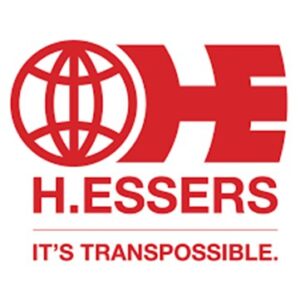 H.Essers was founded in 1928 by Henri Essers and has since grown into one of Europe’s leading companies in logistics for sectors such as chemicals and healthcare. In recent years, the company has experienced significant expansion, thanks to organic growth and strategic acquisitions. In 2022, H.Essers realized sales of 1.1 billion euros. The company currently has over 1,300,000 square meters of storage space, a fleet of 1,420 trucks, 4,060 trailers, 660 Safeboxes and 2,160 Isotanks. Over 50% of this fleet is multimodal. H.Essers has more than 7,500 employees across 89 locations in 18 countries.
H.Essers was founded in 1928 by Henri Essers and has since grown into one of Europe’s leading companies in logistics for sectors such as chemicals and healthcare. In recent years, the company has experienced significant expansion, thanks to organic growth and strategic acquisitions. In 2022, H.Essers realized sales of 1.1 billion euros. The company currently has over 1,300,000 square meters of storage space, a fleet of 1,420 trucks, 4,060 trailers, 660 Safeboxes and 2,160 Isotanks. Over 50% of this fleet is multimodal. H.Essers has more than 7,500 employees across 89 locations in 18 countries.
About Agricover
 Agricover Holding is a leading group of companies in European agribusiness. With more than 23 years of industry experience and an entrepreneurial approach, Agricover brings innovative solutions that transform farmers’ businesses and lives over the long term. Agricover Holding includes the lines of business Agricover Distribution, specializing in the distribution of agricultural commodities; Agricover Credit, a non-bank financial institution specializing in financing farmers; and Agricover Technology, giving farmers access to the latest innovations in global digital agriculture.
Agricover Holding is a leading group of companies in European agribusiness. With more than 23 years of industry experience and an entrepreneurial approach, Agricover brings innovative solutions that transform farmers’ businesses and lives over the long term. Agricover Holding includes the lines of business Agricover Distribution, specializing in the distribution of agricultural commodities; Agricover Credit, a non-bank financial institution specializing in financing farmers; and Agricover Technology, giving farmers access to the latest innovations in global digital agriculture.
Austrian politicians challenge Romania on Schengen to the hilt
Although all European EU countries allow Romania into Schengen, Austria continues to limit it to sea and air borders. All arguments that the land border blockade is long gone and shows that it is only internal partisan political reason still held back.
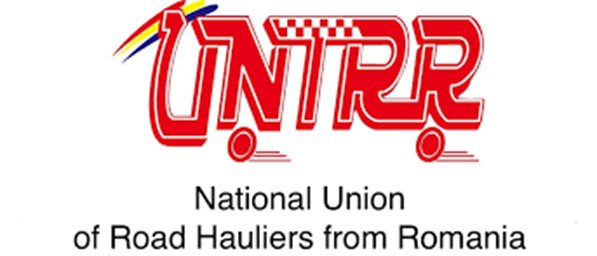 To date, Romania has always taken the diplomatic approach, but now things are in danger of being put on edge. Transporters and their businesses have suffered a huge loss and patience is running out.
To date, Romania has always taken the diplomatic approach, but now things are in danger of being put on edge. Transporters and their businesses have suffered a huge loss and patience is running out.
An uprising of Romanian drivers at customs is imminent. They necessarily spend six hours to two days at the border. In Calafat, Vidin or in western Romania. And this time is calculated as driving time, after that you are not allowed to drive. “The car doesn’t stand still even when you’re in line. She then moves anyway. And if the car moves, driving time is lost,” explained Ion Lixandru, vice president of the National Union of Road Transporters in Romania (UNTRR) and manager of a group of transport companies.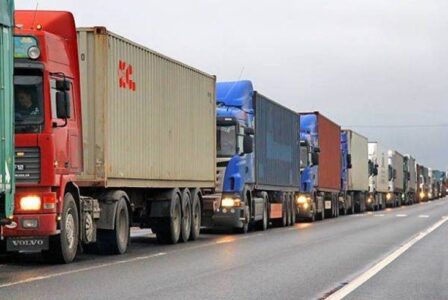
The statement did not upset carriers waiting in line to arrive before Giurgiu-Ruse customs officials. By the time they pass land border controls, they are weighing their losses: extra taxes, less time spent with their families, less pay because of the limited mileage they can drive, and thus generally less money.
How the Romanian state is retaliating against Austria: Consumer Protection held punctuality actions over 197 OMV-Petrom gas stations, and of these, 11 were closed.
The National Consumer Protection Authority (ANPC) launched a comprehensive nationwide inspection campaign over a week ago on gas stations in the OMV-Petrom network, and following the inspections, it imposed fines and the temporary closure of 11 stations. In this way, ANPC tried to give a lesson to a few European states (i.e. Austria) that “draw our attention to the fact that we are not yet ready to access all their systems (read Schengen),” admits the Authority president, referring to the fact that Austria does not want us in Schengen with land borders.
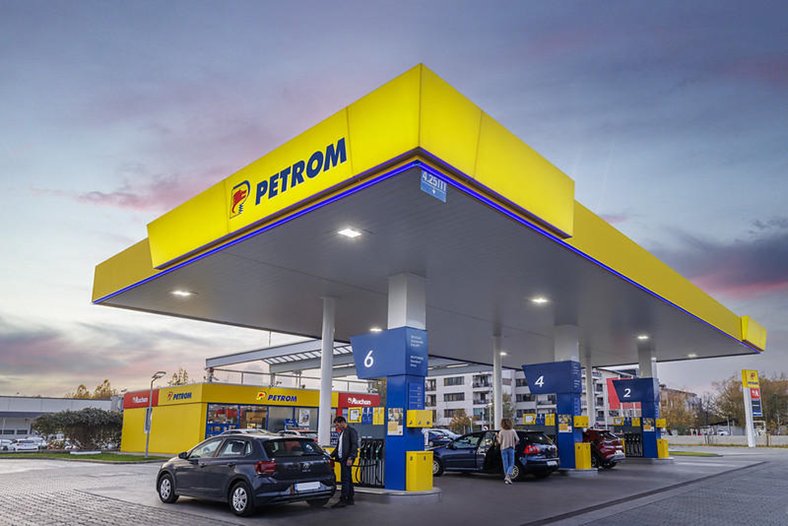
OMV Petrom gas station Photo: OMV Petrom
We remind you that the majority shareholder of Petrom is the Austrian company OMV, and Austria strongly opposes Romania’s entry into the Schengen area with land borders. After much insistence, Romania succeeded in obtaining accession to the European area of free movement only with air and sea borders as of March 31.
Austrian Chancellor Karl Nehammer, who was in Bucharest last week at the congress of the European People’s Party, sent a new, sharp message to Romania after the meeting with Klaus Iohannis : “Austria’s position remains unchanged: the Schengen system is currently not working, therefore cannot be extended.”
ANPC president: We realize that even their market participants are not ready for our country. Horia Constantinescu, ANPC president, stated that in a press release “This broad action takes into account our permanent desire to learn from the best,” ANPC president Horia Constantinescu said ironically in a press release. He says this action is a case study. 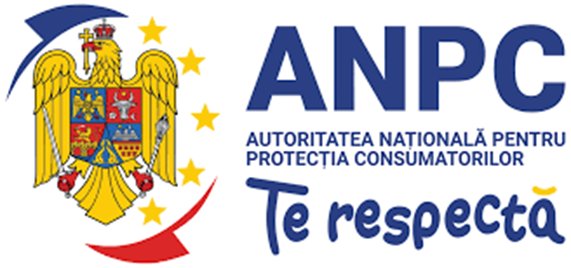 “As we have seen recently, several European countries are drawing our attention to the fact that we are not yet ready to access all of their systems. After this action, we realize that even their leading companies like OMV are not ready for us. Let the one without sin lift the stone, says the Christian religion. We offer them this case study to help us by telling us whether they like the images taken during the action,” Constantinescu said.
“As we have seen recently, several European countries are drawing our attention to the fact that we are not yet ready to access all of their systems. After this action, we realize that even their leading companies like OMV are not ready for us. Let the one without sin lift the stone, says the Christian religion. We offer them this case study to help us by telling us whether they like the images taken during the action,” Constantinescu said.
The Dutch Romanian Network (DRN) has once again raised the issue through its Brussels contacts with Romanian EU Transport Commissioner Adina-Ioana Vălean.
Romania: RO e-Transport system for freight transport
New mandatory entry date into the RO e-Transport system From July 1, 2024, the requirement to notify the RO e-Transport system and obtain UIT codes will come into effect for all international shipments of goods, not just high tax risk products.

In parallel, monitoring of road transports with GPS tracking is being established, both for national goods carriers with fiscal risk and for international goods carriers in general. The RO e-Transport system is the electronic system through which the Romanian Ministry of Finance controls the road transport of goods with high fiscal risk and the international road transport of goods in the country. The aim of implementing this system is to reduce tax evasion, narrow the VAT gap and prevent illegal trade.
The law took effect on Jan. 1, 2023, for goods with high fiscal risk. From July 1, 2024, it will also apply to all international shipments of all types of goods.
Environmental Sector
Regional desertification and illegal deforestation
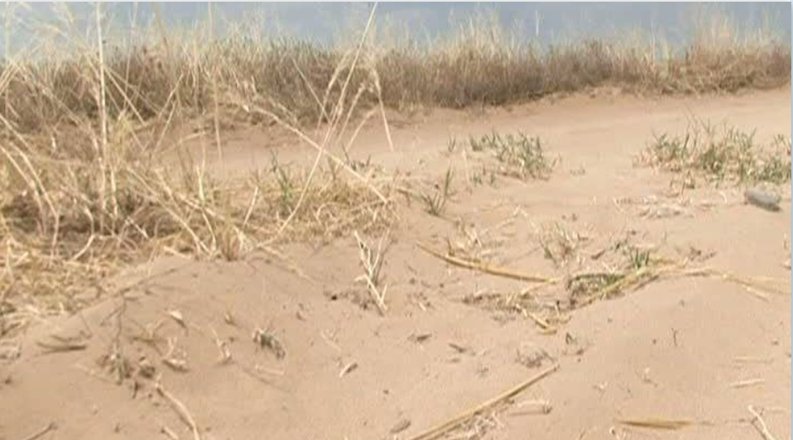 Everyone is familiar with the fact that the Netherlands has a maritime climate and Romania a continental climate and that has implications for the agricultural sector and climate change implies that agricultural land may be lost. Currently, Romania is losing 1,000 hectares of arable land annually due to desertification in the south of the country. says Mircea Fechet (Secretary of State for the Environment) that rapid afforestation is the only solution to combat this phenomenon.
Everyone is familiar with the fact that the Netherlands has a maritime climate and Romania a continental climate and that has implications for the agricultural sector and climate change implies that agricultural land may be lost. Currently, Romania is losing 1,000 hectares of arable land annually due to desertification in the south of the country. says Mircea Fechet (Secretary of State for the Environment) that rapid afforestation is the only solution to combat this phenomenon.
It takes place mainly in the districts of Dolj and Mehrdinti which is already popularly called the Oltenia Sahara.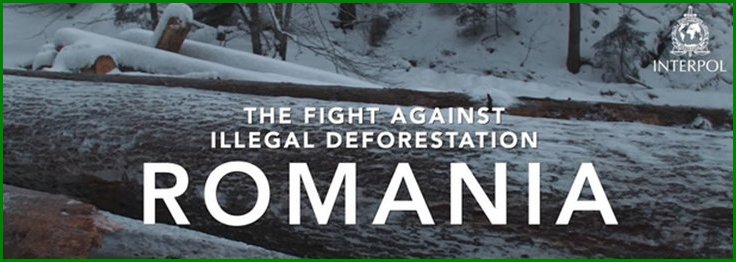
The effects of climate change are clearly visible and felt in the Romanian region of Oltenia. Where once green meadows and forests lined the banks of the Danube River, sandy strips are now expanding. The area in question now covers more than 800 square kilometers along the Danube River. The wind blows sand into villages, and even as far as the capital Bucharest, more than 200 kilometers away. It is the result of a combination of global warming and reckless agricultural policies. In the 1970s and 1980s, dictator Nicolae Ceaușescu had forests cut down and lakes drained in his attempt to promote large-scale agricultural production. Even there were plans to reclaim the Danube Delta.
 Currently, reforestation funds are being made available to combat the spreading desertification, but it has to keep pace with the illegal deforestation that took place for years. The value of this wood: nearly a billion euros. Some of this is visible in the profits of Romanian logging companies and mainly Austrian wood processing companies. Their wood products are for sale throughout the European Union. The largest is Holzindustrie Schweighoferc.q. HS Timber Grouip.
Currently, reforestation funds are being made available to combat the spreading desertification, but it has to keep pace with the illegal deforestation that took place for years. The value of this wood: nearly a billion euros. Some of this is visible in the profits of Romanian logging companies and mainly Austrian wood processing companies. Their wood products are for sale throughout the European Union. The largest is Holzindustrie Schweighoferc.q. HS Timber Grouip.
IKEA is also involved in the destruction of forests in Romania for furniture production
 IKEA is accused of using wood from ancient forests in the Romanian Carpathians for their furniture. IKEA would source wood from the last natural forests of the Romanian Carpathian Mountains, including forests from protected Natura 2000 areas, says the environmental organization Greenpeace.
IKEA is accused of using wood from ancient forests in the Romanian Carpathians for their furniture. IKEA would source wood from the last natural forests of the Romanian Carpathian Mountains, including forests from protected Natura 2000 areas, says the environmental organization Greenpeace.  The company said it is seriously investigating their allegations, reports DPA. An investigation by Greenpeace found that wood from ancient forests, including forests in the Carpathian Mountains, is used by the Swedish company to produce furniture. Several outside manufacturers working for IKEA would use wood from these valuable forests. According to Greenpeace, 30 products from these suppliers were discovered in furniture stores in 13 countries.
The company said it is seriously investigating their allegations, reports DPA. An investigation by Greenpeace found that wood from ancient forests, including forests in the Carpathian Mountains, is used by the Swedish company to produce furniture. Several outside manufacturers working for IKEA would use wood from these valuable forests. According to Greenpeace, 30 products from these suppliers were discovered in furniture stores in 13 countries.
Automotive Sector
Dacia Jogger now also as wheelchair-accessible family car
- Dacia Jogger confirms its versatility with custom conversion for wheelchair passengers
- Innovative conversion accommodates six people, including one wheelchair passenger
- Flexible seats, complete with wheelchair fixation with floor lowering, allow the wheelchair passenger to sit with the other rear passengers
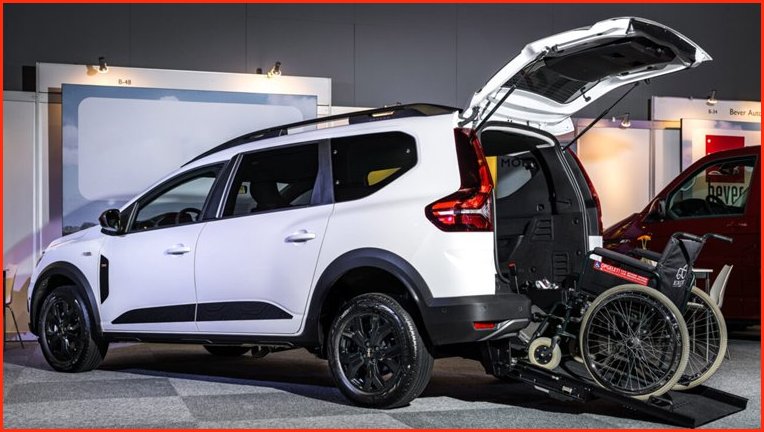
Conversion performed in cooperation with Aanpassingsbedrijf Bierman and Dacia dealer Zeeuw & Zeeuw
Shipbuilding sector
Submarine tender not yet a done deal
Despite the fact that the brand new (November 2023) Christophe van der Maat of Defense indicated within the Cabinet that the award of the four submarines should be awarded to French Naval, a storm of criticism arose. For that, see certainly De Telegraaf with their journalist Sil van Schoonhoven under the headline “French espionage and pressure from British secret service: that’s how the billion-dollar battle for our submarines was decided” or the commentary by former Navy man Jaime Karremann of Marineschepen.nl. Who sees it as the finale of new submarines
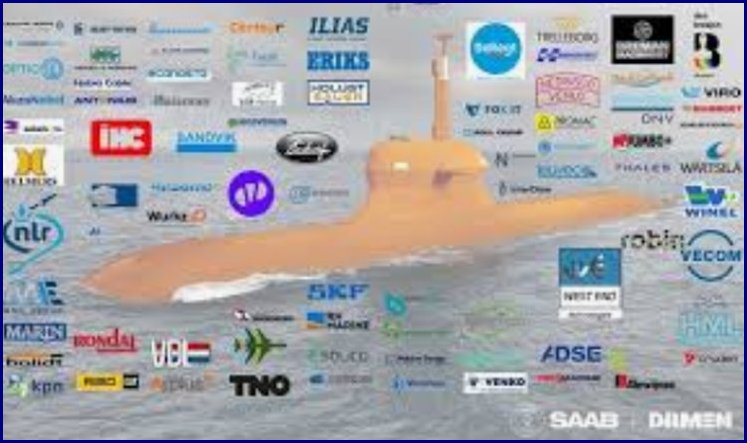
And if one reads the initial discussion in the House of Representatives, it shows that people were talking more about commas and dots than substance. The other two Damen & Saab are refraining from commenting but the German party tkMS(ThijssenKrupp Marine Systems) has indicated that they want to take this case to court.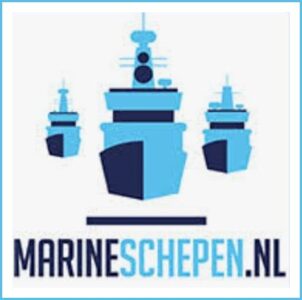
(It seems like ingredients are being offered here for a parliamentary inquiry or investigation, and that in the injury time of an outgoing administration – ed.). We fear that this is not the last word on the matter.
Mangalia shipyard workers send Open Letter to Premier Marcel Ciolacu
Almost a year ago, Damen Holding terminated its cooperation with the Romanian government (is a 51% majority shareholder). As for Damen, it was no longer negotiable after numerous conflicts with the Romanian state. Damen was only willing to cooperate in a proper social arrangement for the 1,500-strong workforce.
Subsequently, this was traduced by the Romanian government and the situation has now arisen that their jobs will cease to exist.The content of the
Open Letter to the Prime Minister reads as follows:
On behalf of the 1,500 Romanian workers left at the Mangalia shipyard, we address this petition to you in the context of the critical situation we face. The purpose of this petition is to obtain the necessary support for protecting jobs and rehabilitating the Mangalia shipyard, considered a strategic objective of national importance, where the Romanian state, through the Ministry of Economy, owns 51% of the shares. The shipyard in Mangalia (DSMa) is facing a drastic drop in work volume and in the absence of concrete measures, most workers are at immediate risk of temporary interruption of operations for a long period of time. Negative financial results and huge debts to creditors (DAMEN Group) increase the risk of insolvency, and disagreements among shareholders can lead to lawsuits at the Court of Arbitration. We are very concerned about shareholder disputes and their potential negative impact on DSMa employees. It is essential that the interests of the workers are taken into account and special attention is paid to the creation of a strategy that guarantees the continuity and stability of employment at the Mangalia shipyard. In conclusion, the current situation of the DSMa shipyard in Mangalia is particularly urgent and critical, and the future of employment and the local community depends on the solutions and actions to be taken urgently.
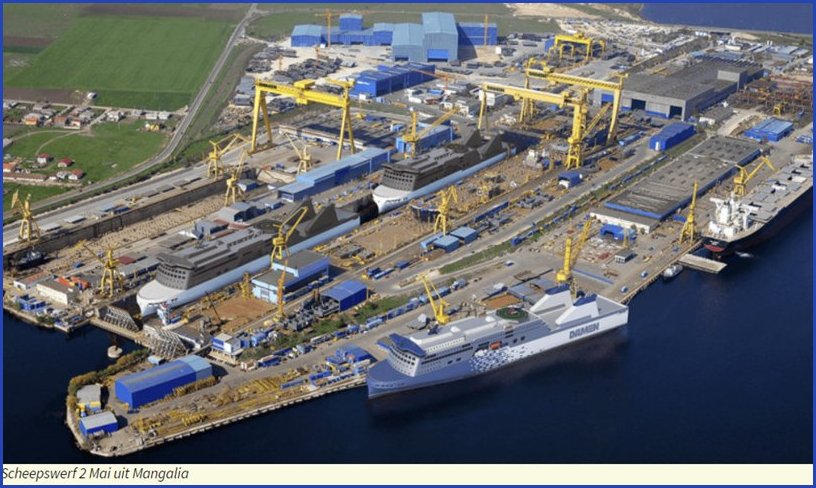
Mangalia’s economy is largely based on income generated by the shipyard, the main local employer. We express our confidence that our concerns and requests will be taken into account. With the support of the Romanian government and all stakeholders, we will be able to identify and implement the necessary solutions to overcome this difficult period. In this regard, consider organizing a meeting with Mangalia employees and their representatives, preferably at the Mangalia shipyard. The purpose of this meeting is to give us information on how to manage the site in case of withdrawal of the foreign partner, given the notices about the termination of the association contract and the claim for compensation sent by the foreign partner DAMEN HOLDING BV. We are also interested in the general vision of the majority shareholder, the Romanian state, through the Ministry of Economy, regarding the company’s mission and objectives. Although the main goal is to make a profit, negative financial results are in direct contradiction to this fundamental goal of any business. We believe it is essential to be informed of measures to restore the site, secure a backlog of orders and protect personnel
As a reminder:
Damen Holding BV (Damen) is a strategic player in the Romanian shipbuilding sector, owning and investing in the country’s largest shipyards (Galați and Mangalia) and operating the largest ship design company in Romania.At the same time, Damen’s presence provides more than 3,500 jobs locally, more than 400 projects have been completed in Romania and more than 30 defense and security vessels have been built for 14 navies and coast guards around the world, including NATO and EU countries.
German company takes legal action after losing construction of Dutch submarines
Germany’s thyssenkrupp Marine Systems (tkMS) objects to the lost order to build four submarines for the Netherlands. The Cabinet awarded the contract to French competitor Naval. As far as the ministry is aware, only tkMS objected to the preliminary award decision.
 The ministry thereby confirms an earlier report by The Telegraph. As to content, the spokesman would not say anything about tkMS’s objection. According to De Telegraaf, the Germans are angry because the Dutch government initially said it wanted a relatively standardized submarine “off the shelf,” but ultimately opted for custom-built submarines from Naval. TkMS could not immediately be reached for comment. Naval is working with Dutch maritime company Royal IHC on the submarines. Another Dutch company, shipbuilder Damen, along with Sweden’s Saab, made a bid in vain for the billion-dollar order. Damen and Saab say on social media network LinkedIn they will not appeal the preliminary award.
The ministry thereby confirms an earlier report by The Telegraph. As to content, the spokesman would not say anything about tkMS’s objection. According to De Telegraaf, the Germans are angry because the Dutch government initially said it wanted a relatively standardized submarine “off the shelf,” but ultimately opted for custom-built submarines from Naval. TkMS could not immediately be reached for comment. Naval is working with Dutch maritime company Royal IHC on the submarines. Another Dutch company, shipbuilder Damen, along with Sweden’s Saab, made a bid in vain for the billion-dollar order. Damen and Saab say on social media network LinkedIn they will not appeal the preliminary award.
‘Existing design’
In these new halls, the future boats for the Netherlands can also be built. Then tkMS would have to beat competitors from France, which has a submarine based on the nuclear Barracuda class, and Sweden, with a variant of the A26.
“What sets us apart from the competition,” says Holger Isbrecht, program manager for the Dutch submarine tender at tkMS, “is that we are the only one offering an existing design. An existing design that is also in production, so there are fewer risks. We don’t offer a completely new design. You can press the button and we start building tomorrow.”
However, the 212CD E proposed by tkMS is not exactly the same as the 212CD for Germany and Norway, the boat designed to meet the requirements of the Dutch Navy is larger, has more space for weapons, has a longer range and a larger crew to enable long expeditionary missions. “But,” says Isbrecht, “we are using the same core systems and components as for the 212CD. So the same electric motor, the same fuel cells, etc. And the development of those components has been completed. Parts that are slightly different, like the accommodation, the fuel tanks, don’t have much impact on the design.”
Confronting harsh realities in the Black Sea
During this period, “suddenly” an emergency call came from the Romanian Ministry of Defense and it concerned an urgent repair of the minesweeper “Vice Admiral Constantin Bălescu.”
The deal, costing 9.16 million lei ( €1,929,262), was signed without a tender, following direct negotiations, invoking a situation of extreme urgency. On November 28, 2023, the Ministry of National Defense, through the Military Unit 02022 Constanța, awarded a contract for “Repair and docking services for the ship of type PMn 274.”
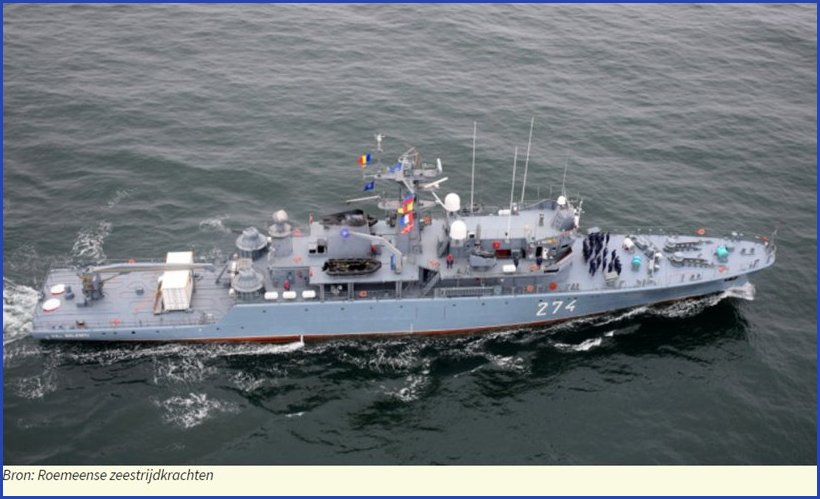
The agreement was signed without a tender, after direct negotiations, invoking a situation of extreme urgency, according to local publication Replica. The contract is valid for 140 days and the repair work will be carried out by Damen Shipyards Mangalia, which will charge 9,163,057 lei for its services, excluding VAT. The Dutch negotiated hard with the Romanian army, from whom they managed to get much more money than the navy had estimated was needed to repair the minefield. Thus, the initial estimated value of the contract was 8,428,649.89 lei, the cited source emphasizes. Damen is (still?) a partner of the Romanian state, in proportions of 49% – 51%, in the 2 Mai Naval Shipyard, in Mangalia, where the military vessel is being repaired.
On the one hand, Damen Shipyards obviously understands the tense situation in the Black Sea as part of a bigger picture, but given course of events as indicated in the previous post, this action by the Romanian Ministry of Defense raises questions.
Damen Marine Components to supply rudder systems for world’s largest Pure Car and Truck Carriers
Damen Marine Components (DMC) has been commissioned to supply rudder systems for four Pure Car and Truck Carriers (PCTC), each capable of carrying up to 9,200 CEU (car equivalent units).
The ships are being built at China Merchants Jinling Shipyard (Jiangsu) Co., Ltd and China Merchants Heavy Industry (Jiangsu) Co., Ltd for their customer BYD Auto, China’s largest manufacturer of electric and hybrid vehicles. When launched, the PCTCs will be the world’s largest in their class. For each PCTC, DMC provides an Atlantic Rudder with Assymetric Rudder Technology (ART™) and a Silent Bulb.

Because there are no moving parts, these spade rudders are very reliable and offer minimal resistance with a slim profile. Their excellent course keeping ability makes them a popular choice for long-range vessels. Each rudder is custom-made to account for the hull shape and propeller angles of the vessel on which it is installed. Optimized in this way, the asymmetric leading edge (ART™) softens water flow across the rudder to maximum effect, reducing drag, cavitation and fuel consumption. ‘Silent Bulb’ The client also chose to have a DMC Silent Bulb mounted on each rudder. This energy-saving device minimizes the chance of cavitation around the rudder by reducing the inevitable flow losses caused by the propeller. This dual approach not only extends the 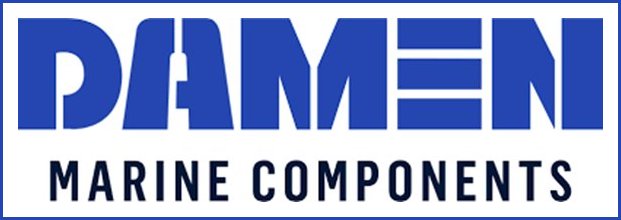 rudder life but also enhances maximum propeller power, thanks to significantly improved propeller efficiency. “We chose Damen Marine Components for the rudder systems because they have a long track record of developing and building top-quality, low-maintenance steering equipment,” said Mr. Fei Li, procurement director of China Merchants Jinling Shipyard. “As a leading manufacturer of low-emission vehicles and one that exports around the world, the reliability of its PCTCs is critical to BYD Autos’ operations.” “We are very pleased that China Merchants Jinling Shipyard came to us for this mission-critical equipment,” said Bogdan Mocanu, Area Sales Manager at DMC.
rudder life but also enhances maximum propeller power, thanks to significantly improved propeller efficiency. “We chose Damen Marine Components for the rudder systems because they have a long track record of developing and building top-quality, low-maintenance steering equipment,” said Mr. Fei Li, procurement director of China Merchants Jinling Shipyard. “As a leading manufacturer of low-emission vehicles and one that exports around the world, the reliability of its PCTCs is critical to BYD Autos’ operations.” “We are very pleased that China Merchants Jinling Shipyard came to us for this mission-critical equipment,” said Bogdan Mocanu, Area Sales Manager at DMC. 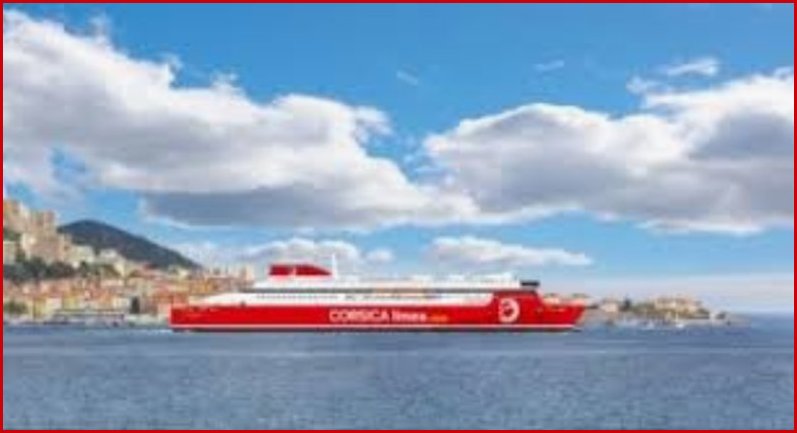 “We appreciate their approval of our products and are confident that our rudders will provide many years of economical and trouble-free use.” China Merchants Jinling Shipyard China Merchants Jinling Shipyard is a shipbuilding company based in Nanjing, Jiangsu Province, China. Founded in 1951, it has become one of the largest shipyards in China. The shipyard specializes in building various types of ships, including the Airbus 380 Roro ship, Ropax, PCTC, bulk carriers, container ships, MPV and LNG carriers. The shipyard employs more than 10,000 people and has a production capacity of up to two million tons of deadweight per year. The first ship is expected to be delivered in 2025.
“We appreciate their approval of our products and are confident that our rudders will provide many years of economical and trouble-free use.” China Merchants Jinling Shipyard China Merchants Jinling Shipyard is a shipbuilding company based in Nanjing, Jiangsu Province, China. Founded in 1951, it has become one of the largest shipyards in China. The shipyard specializes in building various types of ships, including the Airbus 380 Roro ship, Ropax, PCTC, bulk carriers, container ships, MPV and LNG carriers. The shipyard employs more than 10,000 people and has a production capacity of up to two million tons of deadweight per year. The first ship is expected to be delivered in 2025.
Export of Dutch submarines thanks to Swedish-Dutch cooperation Saab-Damen
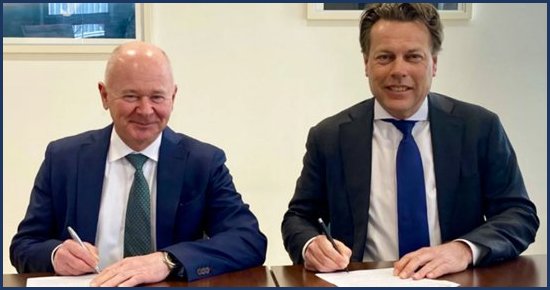 Saab and Damen Shipyards have reached an agreement to export their advanced expeditionary C-71 submarine. This submarine was developed for the Royal Navy, as a possible replacement for the Walrus class. CEO of Damen Shipyards Arnout Damen and CEO of Saab Micael Johansson agreed.
Saab and Damen Shipyards have reached an agreement to export their advanced expeditionary C-71 submarine. This submarine was developed for the Royal Navy, as a possible replacement for the Walrus class. CEO of Damen Shipyards Arnout Damen and CEO of Saab Micael Johansson agreed.
This agreement at once doubles the long-term employment and revenue prospects for the entire Dutch naval construction industry in the case of new submarines for Defense by Saab/Damen.
Saab and Damen have been working together since 2015 to build, modernize and maintain the new expeditionary submarine for the Royal Navy.
That project is now entering its ninth year and now involves much more than the purchase of four new boats. In those eight years, the world has changed tremendously. The strategic autonomy of the Netherlands has become important, including and especially through projects such as the replacement of the Dutch submarines. Our naval construction is still the only self-creating defense industry sector in the Netherlands.
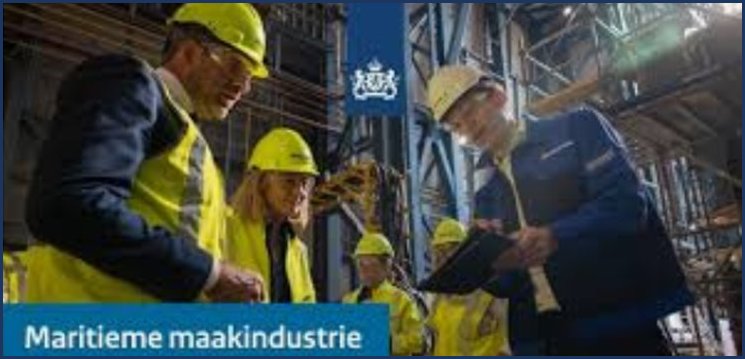
The two companies have also now agreed to offer the C-71 offered to Canada. This country is in the initial phase of a similar process to replace their diesel-electric submarines.
With this, Saab/Damen offers space to the Government for a truly strategic decision, in light of the Defense Industry Strategy, the parliamentary letter “The Defense Industry Strategy in a new geopolitical context” and the Maritime Manufacturing Sector Agenda.
The expeditionary submarine offered by Saab and Damen is based on the successful, proven and future-proof design of the A26 submarines. It incorporates the latest capabilities and technologies, while its modular design allows for new technologies as they develop, ensuring relevance for decades to come.
Sweden, through Saab, has a long tradition of producing world-class submarines. For this new expeditionary design, with support from the United Kingdom, Damen Shipyards and a range of Dutch suppliers are working closely together. Four countries currently operate submarines and submarine technology designed by Saab: Sweden, Australia, Japan and Singapore.
Royal Van der Leun signs contract with Damen for four all-electric BC Ferries
Royal Van der Leun is proud to announce the order for four all-electric passenger car ferries to BC Ferries in partnership with Damen! This order includes ferries seven through ten as part of our ongoing collaboration. Having already completed construction of the first six vessels, Royal Van der Leun will supply and install the complete electrical package, including installation and automation, for the newly ordered ferries.

Our Canadian branch, based in Victoria BC, has been providing services to BC Ferries and Damen for several years. The facility is steadily growing into a self-sustaining hub with local staff and resources to serve customers locally. Providing high-quality services and remote support worldwide, 24 hours a day, after new construction and throughout the life of the vessels, underscores the reliability the company strives for. “This new project is a great sign of Royal Van der Leun’s appreciation, trust and commitment to their clients Damen and BC Ferries,” said Martin den Breejen, CEO of Royal Van der Leun.
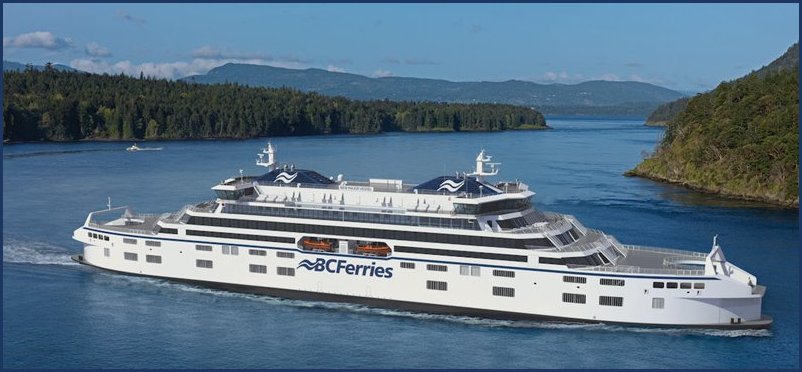
Royal Van der Leun’s scope includes a total package of electrical and (bridge) navigation equipment for the project. This includes system integration, main switchboards, distribution boards, variable frequency converters, transformers, our high-end in-house developed energy management system, alarm monitoring and decentralized control system. We also supply propulsion/E-motors, nautical equipment, CCTV, shore power equipment, wheelhouse desks, ECR consoles, navigation equipment, internal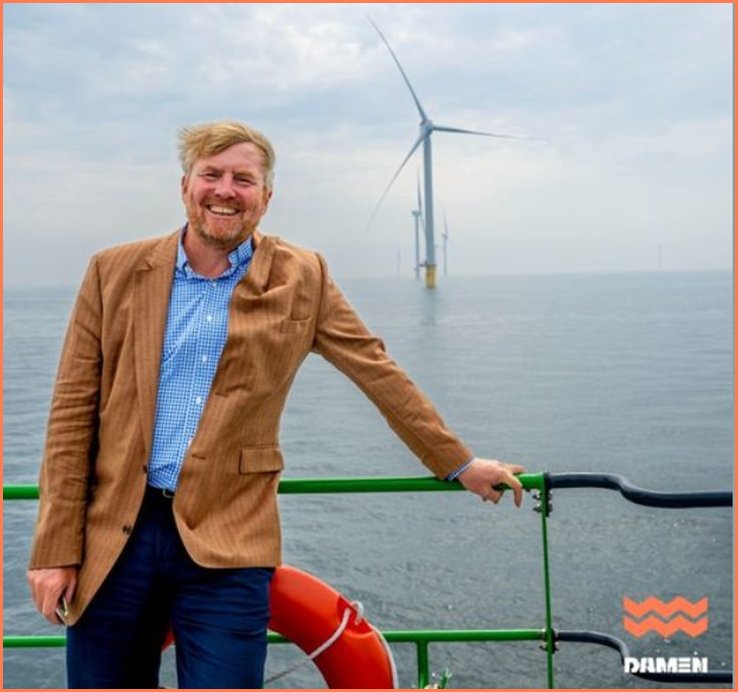 communication systems, cable packages, emergency stop systems, fire detection systems, announcement systems, general alarm systems, public address systems, battery chargers including batteries, UPS systems and all commissioning and installation will be supplied and performed by Royal van der Leun. Each ferry has capacity for up to 47 vehicles and 390 passengers. The ships will be powered by batteries with a total capacity of 2,000 kilowatts. Fast charging, using renewable electricity, will occur during passenger and vehicle boarding and disembarkation at each terminal. In addition, auxiliary diesel engines will be installed on each ship for backup and general redundancy purposes. The four ships are expected to enter service in 2027, with two ships each on the routes connecting Nanaimo Harbor and Gabriola Island, and Campbell River and Quadra Island. Royal Van der Leun would like to thank BC Ferries and Damen for their great confidence in Royal Van der Leun. We look forward to working together and are proud to play a role in advancing the sustainability of public transportation!
communication systems, cable packages, emergency stop systems, fire detection systems, announcement systems, general alarm systems, public address systems, battery chargers including batteries, UPS systems and all commissioning and installation will be supplied and performed by Royal van der Leun. Each ferry has capacity for up to 47 vehicles and 390 passengers. The ships will be powered by batteries with a total capacity of 2,000 kilowatts. Fast charging, using renewable electricity, will occur during passenger and vehicle boarding and disembarkation at each terminal. In addition, auxiliary diesel engines will be installed on each ship for backup and general redundancy purposes. The four ships are expected to enter service in 2027, with two ships each on the routes connecting Nanaimo Harbor and Gabriola Island, and Campbell River and Quadra Island. Royal Van der Leun would like to thank BC Ferries and Damen for their great confidence in Royal Van der Leun. We look forward to working together and are proud to play a role in advancing the sustainability of public transportation!
Damen Naval orders RENK gearboxes for Anti-Submarine Warfare frigates
Damen Naval has contracted RENK to supply the gearboxes for the propulsion of the new Anti-Submarine Warfare (ASW) frigates. The Dutch shipyard is building four new frigates, two for the Royal Navy and two for the Belgian Navy. The contract includes eight gearboxes that are part of the CODLAD (COmbined Diesel-eLectric And Diesel) propulsion system. There is also a special Dutch connection as RENK’s subsidiary Schelde Gears B.V. will provide support in design and service activities.

Damen Naval and RENK have developed a propulsion system that meets the requirements of an Anti-Submarine Warfare frigate, focusing on quiet propulsion and high resistance to external influences.
“We have been working with RENK for a long time, and we are delighted that they are coming on board with this project as well,” says Damen Naval’s Project Director Joop Noordijk. “The ASW frigates will be second to none in both design and capabilities, and we can’t wait to see them take shape over the next few years. We are steadily seeking our suppliers and partners for this project. It is great that with this contract there is also a connection close to home through the collaboration with Schelde Gears.”

Damen Naval already uses RENK’s customized propulsion solutions for the German Navy’s F126 multipurpose combat frigates and the globally successful Sigma-class frigates. This contract also allows the ASW frigates to be added to this list.
“This drive system is a milestone in the marine segment and this order fits seamlessly into the close cooperation between our two companies,” said Nils Oesterlen, Head of Marine at RENK. “Proven components of propulsion systems such as for the German F125 and F126 frigates, the Italian FREMM or the Korean FFX-III class make gearboxes the robust, easy-to-maintain and reliable centerpiece of the propulsion system.”
In addition, RENK will support the Dutch maritime industry with its Dutch subsidiary Schelde Gears B.V., which, like Damen Naval, is based in Vlissingen (Renk’s headquarters are in Augsburg, Germany). The first gearboxes will arrive for installation as early as October 2025. The first of the ASW frigates will be delivered by Damen Naval in 2028.
Romanian government still has not paid debt to Multraship in Terneuzen after 23 years
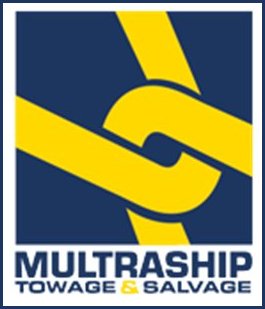
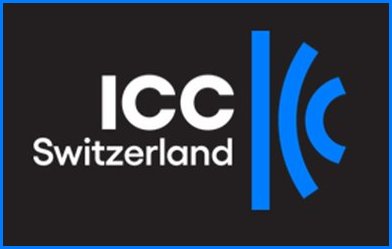 Dutch entrepreneurs who have been established in Romania for some time, as well as Dutch (former) politicians such as Lianne Ploumen(PvdA) and Sjoerd Sjoerdsma(D66) and diplomats residing in Romania are all familiar with the Rostock Wreck Removal at and in the Sulina Channel. Despite the ICC International Court of Arbitration in Zurich ruling against the Romanian state, things remain quiet in Bucharest. The claim will probably have risen to 15 million Euros due to interest losses!
Dutch entrepreneurs who have been established in Romania for some time, as well as Dutch (former) politicians such as Lianne Ploumen(PvdA) and Sjoerd Sjoerdsma(D66) and diplomats residing in Romania are all familiar with the Rostock Wreck Removal at and in the Sulina Channel. Despite the ICC International Court of Arbitration in Zurich ruling against the Romanian state, things remain quiet in Bucharest. The claim will probably have risen to 15 million Euros due to interest losses!
Energy sector
Damen Naval orders RENK gearboxes for Anti-Submarine Warfare frigates</stRomania, one of the few European countries to become an electricity exporter by 2023>
According to data from ACER, the Association of EU Market Regulators, only five European countries will be net exporters of electricity in Europe by 2023. Romania is one of them. According to ACER data, Romania, along with France, Slovakia, Slovenia and Switzerland, became a net exporter of electricity in 2023.
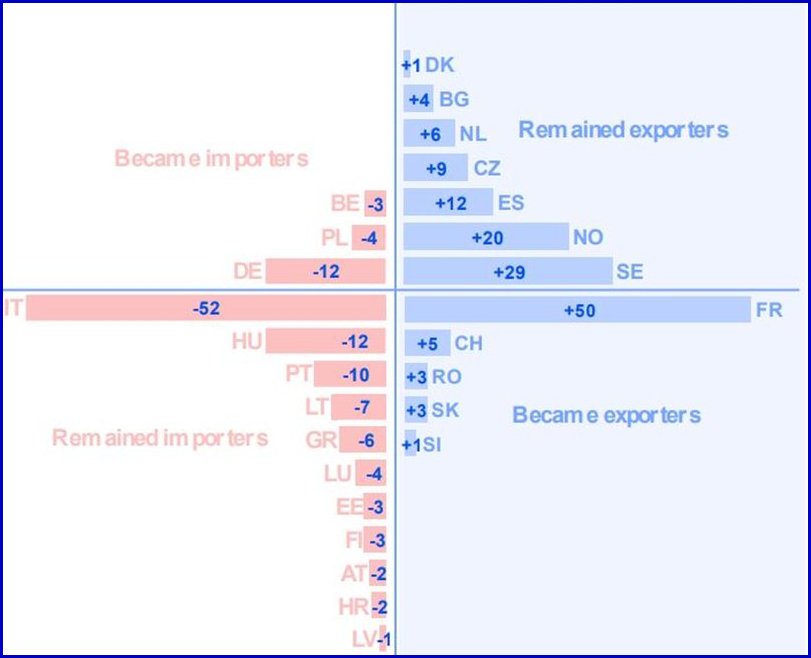
As you can see from the chart (the survey does not include the UK), Romania’s net export position was 3 TWh, which does not put us too high in any ranking. The good news is that last year, especially given the background of very good hydraulics, Romania was no longer a net importer but became an exporter. This, of course, also against the background of a decline in national consumption, by over 5%.
Here are some relevant events of the past year, in this context:
France has become a net exporter of electricity, reversing the import position it previously held. Moreover, with the 50 TWh exported (roughly the annual consumption of Romania), the country has become the largest exporter of electricity in Europe, thanks to the increase in the number of hydroelectric and nuclear power plants.
Germany became a net importer of electricity after the closure of all nuclear plants
Spain reduced its exports, although it introduced a ceiling mechanism that lowered prices
Italy remained the continent’s largest importer of electricity.
According to ACER, Ialia, Lithuania and Luxembourg were net importers of electricity almost every hour last year.
All EU member states have at least once imported electricity and at some point bought it cheaper from a neighboring market, which ACER says demonstrates the importance of the capacity of interconnections between networks to trade energy.
Macroeconomic developments
Romanian budget deficit worries
Government balance and debt are the main indicators of the state of public finances. European standards for this are a maximum deficit of 3 percent and a maximum debt of 60 percent of GDP. As of 2017, the Dutch government’s deficit and debt met these European standards, with the exception of 2020 when the deficit slightly exceeded 3 percent.
The Dutch budget deficit was 0.3% percent of GDP in 2023.
Last year, Romania had one of the largest budget deficits as a percentage of GDP in the European Union, of 6.6%, surpassed only by Hungary and Italy, while our country, as measured by the share of public debt in GDP, was below the EU average in the fourth quarter of 2023, but with one of the highest annual increases, according to Eurostat statistics published Monday.
Thus, the budget deficit in the European Union rose to an average of 3.5% in 2023 from 3.4% in 2022.
Of the 27 member states, Cyprus and Denmark were the only ones not in the red, both with surpluses of 3.1%, Ireland (1.7%) and Portugal (1.2%).
The largest budget deficits as a percentage of GDP were reported by Italy (-7.4%), Hungary (-6.7%) and Romania (-6.6%). A total of 11 member states exceeded the 3% of GDP threshold.
In the case of Romania, the budget deficit at the end of last year was 106 billion lei, compared with 88 billion lei in 2022. Government spending rose to 40.2% of GDP and revenues represent 33.6% of GDP, according to data published by Eurostat.
As for government debt to GDP ratio, the EU average was 81.7%, with the lowest shares at the end of last year in Estonia (19.6%), Bulgaria (23.1%), Luxembourg (25.7%), Denmark (29.3%) and Sweden. (31.2%) and Lithuania (38.3%).
Thirteen other EU member states had shares of over 60%, with the highest rates in Greece (161.9%), Italy (137.3%), France (110.6%), Spain (107.7%) and Belgium (105.2%).
In the case of Romania, public debt in T42023 had a weight of 48.8% of GDP, totaling 783 billion lei. Compared to the third quarter of 2023, the share of debt decreased by 0.5%, according to Eurostat.
Romania had one of the largest year-on-year increases, at 1.3%, surpassed only by Latvia at 1.8% and Finland at 2.3%.
Overall, nine member states experienced an increase in the share of government debt in GDP in the fourth quarter of 2023 compared with the fourth quarter of 2022, and 18 countries experienced a decrease.
The budget equation with 1.3 million unknowns: Romania, as a share of the budget, has the fourth largest budgetary expenditure in the European Union, after tax havens such as Cyprus, Malta or Ireland. Spending on the salaries of budget workers has increased 10 times over the past 20 years.
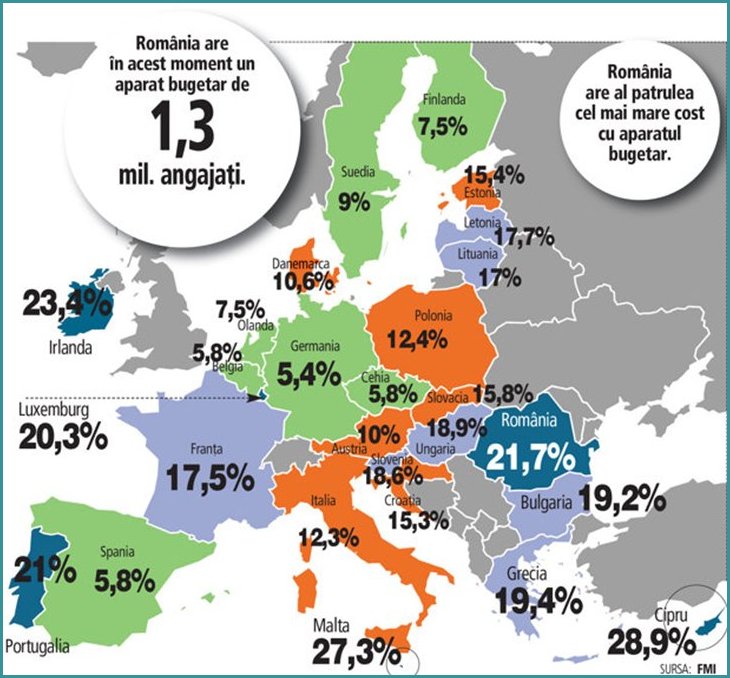
According to Valentin Tătaru.Economist at ING Romania, the budget deficit could reach 5.5% in 2024.
“Assessing the latest developments, we still choose to stick to our deficit estimate of 5.5% by the end of 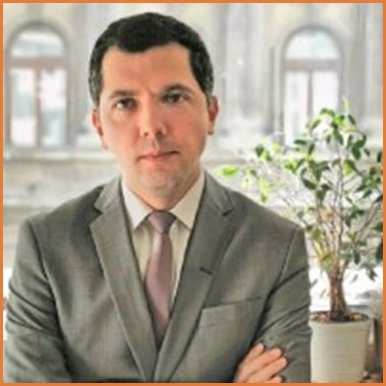 2024 and 5.0% by the end of 2025. That said, we recognize that risks have increased and are trending strongly upward. However, we believe more data and more facts are needed before raising the deficit forecast,” said Valentin Tătaru.The report shows that the government could still end up cutting this year’s investment budget to keep spending under control if the EC is desperate for immediate progress. Further spending improvements are unlikely in an electoral context and could be a story for 2025.
2024 and 5.0% by the end of 2025. That said, we recognize that risks have increased and are trending strongly upward. However, we believe more data and more facts are needed before raising the deficit forecast,” said Valentin Tătaru.The report shows that the government could still end up cutting this year’s investment budget to keep spending under control if the EC is desperate for immediate progress. Further spending improvements are unlikely in an electoral context and could be a story for 2025.
Second, incomes will indeed rise, but will likely remain far from the ideal growth trajectory. The latest tax package should generally increase revenue, but the delay until June 1 of strict enforcement of digitized e-invoice reporting for businesses indicates that improvements are still needed in the tax collection process. Overall, spending is unlikely to change unless certain investments are deferred again, while revenues remain dependent on process improvements.
Third, there are numerous key factors to consider this year that could cause changes in the budget deficit in either direction. At the local level, probably the most important is the reorganization of ANAF and the potential increase in taxes for SMEs as part of Romania’s commitments to the milestones of the third tranche of the Recovery and Resilience Facility.
By 2025, ING predicts budget deficit to be reduced to 5%
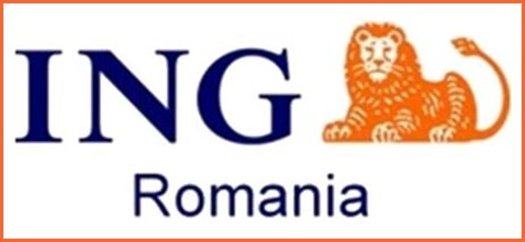 “For 2025, we have projected a reduction in the deficit to 5.0% and we believe the overall risks are balanced. Larger revenues will likely come from a new tax package, which could be introduced in early 2025. Our central scenario assumes that the current coalition will remain in place. As potential future measures, improvements and experiments with the latest digital updates to ANAF could in principle also prepare the technical infrastructure needed to implement progressive taxation.
“For 2025, we have projected a reduction in the deficit to 5.0% and we believe the overall risks are balanced. Larger revenues will likely come from a new tax package, which could be introduced in early 2025. Our central scenario assumes that the current coalition will remain in place. As potential future measures, improvements and experiments with the latest digital updates to ANAF could in principle also prepare the technical infrastructure needed to implement progressive taxation.
Moreover, broader luxury and capital taxes, as well as a more uniform VAT system, are probably on the table. An important factor to keep an eye on is whether and how the government will reform public sector wages to reduce inequality, in a manner similar to the recent pension reform. This law could be passed later this year and implemented in 2025.
Fiscal Sector
Mazars presents its annual Tax Guide for Central and Eastern Europe
As stated at the recent expert meeting in Venlo, Mazars in Bucharest is the right address for entrepreneurs from the Small and Medium-sized Business sector who, especially in the start-up phase, unburden the entrepreneur from setting up a company’s accounts. Payroll and tax compliance.
One stop shop, full outsourcing is often preferred so the entrepreneur can focus on running the business.
For business owners located in or considering multiple countries, the annual Central and Eastern Europe Tax Guide has now been released once again.
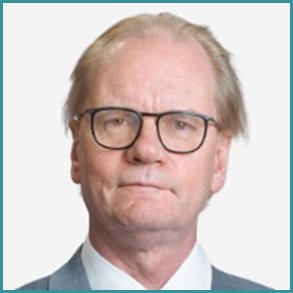
Edwin Warmerdam Partner, Head of Tax Mazars in Romania edwin.warmerdam@mazars.ro
The guide is a valuable resource for businesses because of the complex and ever-changing tax landscape in the region. It provides in-depth analysis of corporate income tax, value-added tax and other tax considerations, along with practical examples for better understanding.
In addition, the guide offers summaries comparing the tax rules of different countries and puts you in touch with Mazars’ tax specialists for personal guidance.
Our interactive platform offers a deeper dive into tax comparison for 25 countries, employment contributions, VAT and Pillar 2. It allows analysis of key factors such as R&D tax exemptions, group tax and transfer pricing regulations to find the most competitive environment for your business.
Romanian aviation sector
A new international airport is being built in Romania. The project received the approval of ROMATSA
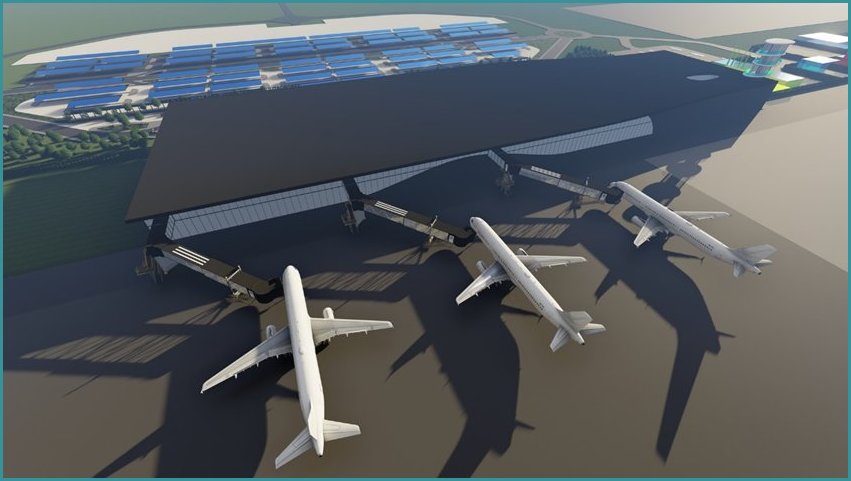 The specialists determined that the airport in Galati district will have an area of 250 hectares, to which will be added an area of about 115 hectares reserved for public investment.
The specialists determined that the airport in Galati district will have an area of 250 hectares, to which will be added an area of about 115 hectares reserved for public investment.
The airport to be built on a site located between Braniştea, Slobozia Conachi and Tudor Vladimirescu. It is an extremely important project, expected by millions of people from Galati, Brăila, Vrancea and Bârlad, as well as from the Cahul District area.
According to the project, the Galati-Brăila International Airport is equipped with a passenger terminal, with an area of 28,500 square meters, and a cargo terminal, with an area of about 5,500 square meters. For maximum efficiency, the control tower will be integrated into the passenger terminal, which will have 9 boarding gates. The runway will be 3,500 meters long, just like Otopeni, Timisoara and Constanţa airports.
“In practice, all types of commercial aircraft will be able to take off and land on this runway.
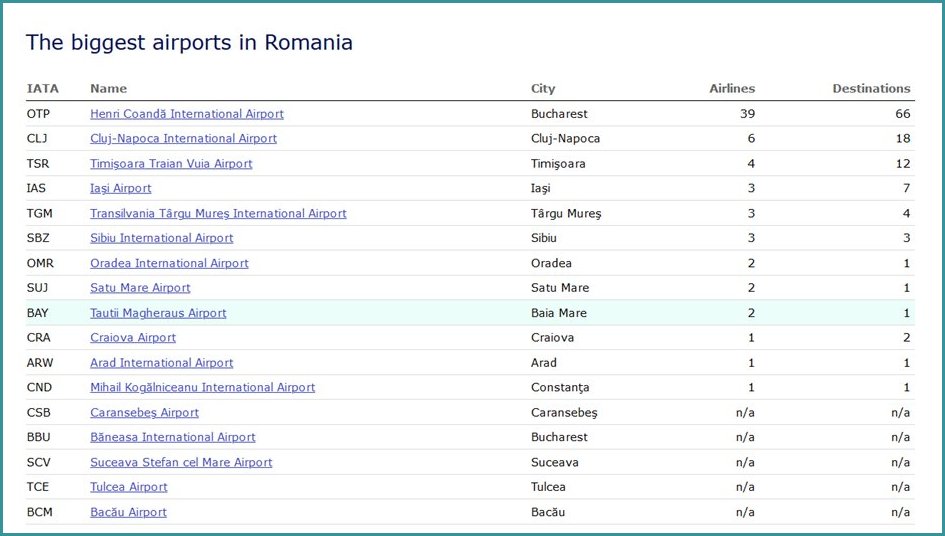
Everyone can see that Romania certainly does not lack airports, and the news reports show no need for expansion. Only a limited number have regular and frequent scheduled services. In the Netherlands, these are mainly Schiphol Airport and Eindhoven Airport.
Another question in this context is that the Romanian state flag carrier TAROM continues to operate despite not making a profit since 2007, according to local sources.
Geopolitical developments
Romania to host largest NATO military base in Europe
Work has begun on expanding the Mihail Kogalniceanu base in Romania to turn it into the largest NATO military base in Europe.
The military base in Mihail Kogqlniceanu, Constanta, in southeastern Romania, on the Black Sea coast, will become NATO’s largest military base in Europe, surpassing in size the U.S. military base in Ramstein, Germany.

The new base will give Romania a greater role in NATO’s security architecture and a stronger position in the Black Sea, which is militarily dominated by Russia. By 2030, the country will be able to accommodate 10,000 soldiers and civilians.
NATO and the US will move some of the logistical and human resources from Ramstein to the Mihail Kogalniceanu base.
Expansion work will cost $2.7 billion, and work on access roads and a high-capacity electrical network has already begun. Romanian authorities expropriated 2,400 hectares from the towns of Mihail Kogalniceanu and Lumina, paying 5,500 euros per hectare.
“There will be social housing for individual staff or families. There will be block houses, individual houses, nurseries, kindergartens, schools, pharmacies, everything needed,” said Mihail Kogalniceanu commander Nicolae Cretu.
At nearly 3,000 acres, the base will be the largest in Europe. Ramstein in Germany covers about 2,000 hectares.
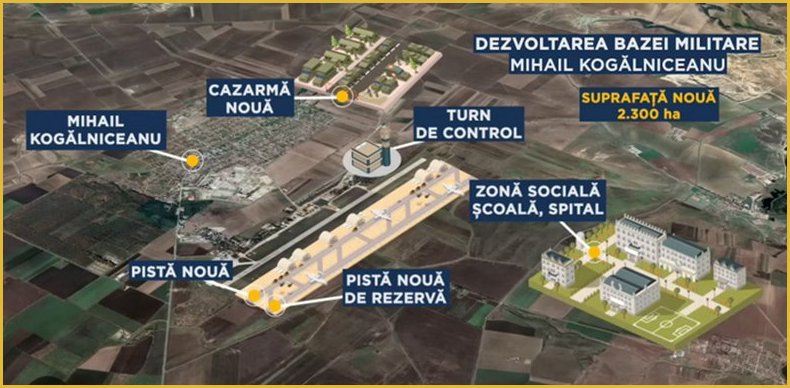
The airport’s current runway will be doubled and served by fuel depots and several hangars for different types of jets and drones. NATO’s plans include building another airstrip for aircraft.
In addition to the new military infrastructure, the Kogalniceanu base will include schools, kindergartens, stores and a hospital.
General Virgil Balaceanu, president of the Association of Reserve Officers and former representative of Romania at NATO Command in Brussels, told Radio Romania that Ukraine and the war there are not far from Romania.
With war on its borders, he says Romania must take worst-case scenarios into account, and that strengthening the country’s defense and deterrence position is essential.
In recent years, Romania has invested massively in defense. For 2024, the army has a budget of over 20 billion euros, 45 percent more than in 2023. The money is mainly for the purchase of modern weapons.
According to data made public, including the amount spent in 2023, over a five-year period, including 2027, Romania will invest nearly 320 billion lei in the military, or about 65 billion euros.
The expansion of Romania’s Mihail Kogalniceanu air base on the Black Sea coast, Russian officials commented, should consolidate NATO’s eastern flank. However, it is important to consider the project’s long-term calendar and the fact that it was launched long before Russia invaded Ukraine in February 2022, which would also cover the Middle East from its base.
There are different voices about the size of the base in Romania compared to Germany, but it is not relevant otherwise.
President Jo Biden receives President Klaus Werner Johannis in Washington
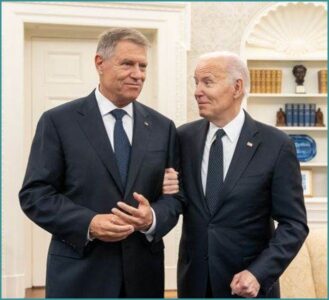 On May 7 and 8, the two presidents had a lengthy conversation in which the situation in Ukraine played a central role, and Biden expressed his appreciation for Romania’s role in this as a NATO member, referring of course also to the shift the center of gravity of the U.S. presence(in NATO context) from Germany’s Ramstein to Romania’s base located on the Black Sea. It is hoped this will act as a deterrent to Russian Federation.
On May 7 and 8, the two presidents had a lengthy conversation in which the situation in Ukraine played a central role, and Biden expressed his appreciation for Romania’s role in this as a NATO member, referring of course also to the shift the center of gravity of the U.S. presence(in NATO context) from Germany’s Ramstein to Romania’s base located on the Black Sea. It is hoped this will act as a deterrent to Russian Federation.
It was partly also a working visit that included the Visa Waver program, and for that purpose Foreign Minister Luminița Odobescu and Deputy Prime Minister Cătălin Predoiu, the Interior Minister were part of the delegation.
Romanian President, Recipient Of Washington Oscar Prize
Romanian President Klaus Iohannis is one of the recipients of the Atlantic Council’s prestigious annual awards, the Distinguished Leadership Awards, considered the “Washington Oscars.
The Atlantic Council, one of the world’s leading think tanks, awarded it to him at a gala in Washington, DC, on May 8.
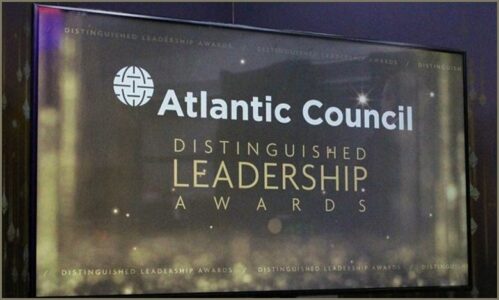 Klaus Iohannis received this award for his “remarkable career, exemplary leadership of Romania and for his role in transatlantic and European leadership,” according to a press release from the organization.
Klaus Iohannis received this award for his “remarkable career, exemplary leadership of Romania and for his role in transatlantic and European leadership,” according to a press release from the organization.
The award was presented to him by Stephen J. Hadley, chairman of the Atlantic Council’s International Advisory Committee and former U.S. national security adviser.
The Atlantic Council also sought to honor Gina M. Raimondo, U.S. Secretary of Commerce, recognized for her outstanding tenure in the U.S. government and for being the first woman to become governor of the state of Rhode Island.
General Christopher G. Cavoli, Supreme Allied Commander Europe (SACEUR) and head of US European Command, has received an award for his more than 35-year career in the US Army.
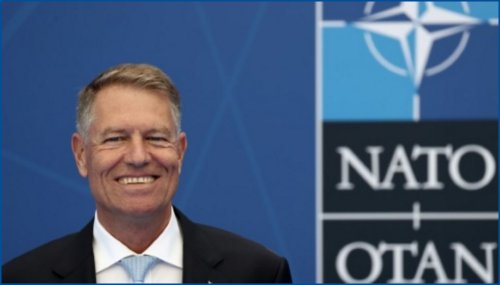 President Klaus Iohannis is the first European head of state to be honored with this award in the 24 years since it was established. The Atlantic Council is a prestigious American “think tank” organization, founded in 1961, with rich activity in international affairs. Every year, the Atlantic Council rewards a limited number of personalities who embody the essence of the transatlantic relationship and who have contributed to its consolidation, in all its dimensions (political, economic, security and defense, arts, humanitarian activities, etc.). Previous recipients of the Atlantic Council Distinguished Leadership Awards include U.S. Presidents George W. Bush (2018), William J. Clinton (2010) and George HW Bush (2009), U.S. Vice President Joseph R. Biden, Jr. (2011) – current The U.S. President, European Commission Presidents Ursula von der Leyen (2021) and Jose Manuel Barroso (2014), Italian Prime Minister Mario Draghi (2022), German Chancellor Helmut Kohl (2009), British Prime Minister Tony Blair (2008), as well as other heads of state and government or leaders of international organizations.
President Klaus Iohannis is the first European head of state to be honored with this award in the 24 years since it was established. The Atlantic Council is a prestigious American “think tank” organization, founded in 1961, with rich activity in international affairs. Every year, the Atlantic Council rewards a limited number of personalities who embody the essence of the transatlantic relationship and who have contributed to its consolidation, in all its dimensions (political, economic, security and defense, arts, humanitarian activities, etc.). Previous recipients of the Atlantic Council Distinguished Leadership Awards include U.S. Presidents George W. Bush (2018), William J. Clinton (2010) and George HW Bush (2009), U.S. Vice President Joseph R. Biden, Jr. (2011) – current The U.S. President, European Commission Presidents Ursula von der Leyen (2021) and Jose Manuel Barroso (2014), Italian Prime Minister Mario Draghi (2022), German Chancellor Helmut Kohl (2009), British Prime Minister Tony Blair (2008), as well as other heads of state and government or leaders of international organizations.
Romanian president’s comments on rendering NATO remittance
In 2023, Romania allocated 2.5% of GDP to Defense, but managed to spend only 1.6%, below the 2% threshold required by NATO. The country’s president, Klaus Iohannis, said recently that there are also reasons to spend lower than the budget allocation, which are not owned by state authorities.
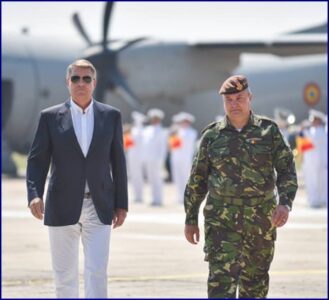
Klaus Iohannis at the Mihail Kogalniceanu base Photo: Facebook/Klaus Iohannis
A recently published NATO analysis shows that by 2023, Romania has allocated 2.5% of GDP to defense, but only managed to spend 1.6%. With this threshold, Romania is just below the Alliance average of 1.73%. Asked about this aspect, Klaus Iohannis, who was in Vilnius at the Summit of the Three Seas Initiative, explained the reasons why less is being spent than allocated.
“The statement is not very complicated and I stress that it is not good to have accounting approaches, but to see the picture a little bigger. There are few important reasons why the allocation was one aspect and spending was another interpretation, because the initial allocation respected the political promise,” Iohannis said.
“The money could not be spent as intended for various reasons, some had to do with us, some did not. So it could vary by country or countries. One reason we had no control over: the things we wanted to buy simply could not be found. It is a global problem, in the field of military resources the demand is incomparably greater than the supply, and certain things we wanted, we could not get in this short time,” the country’s president said.
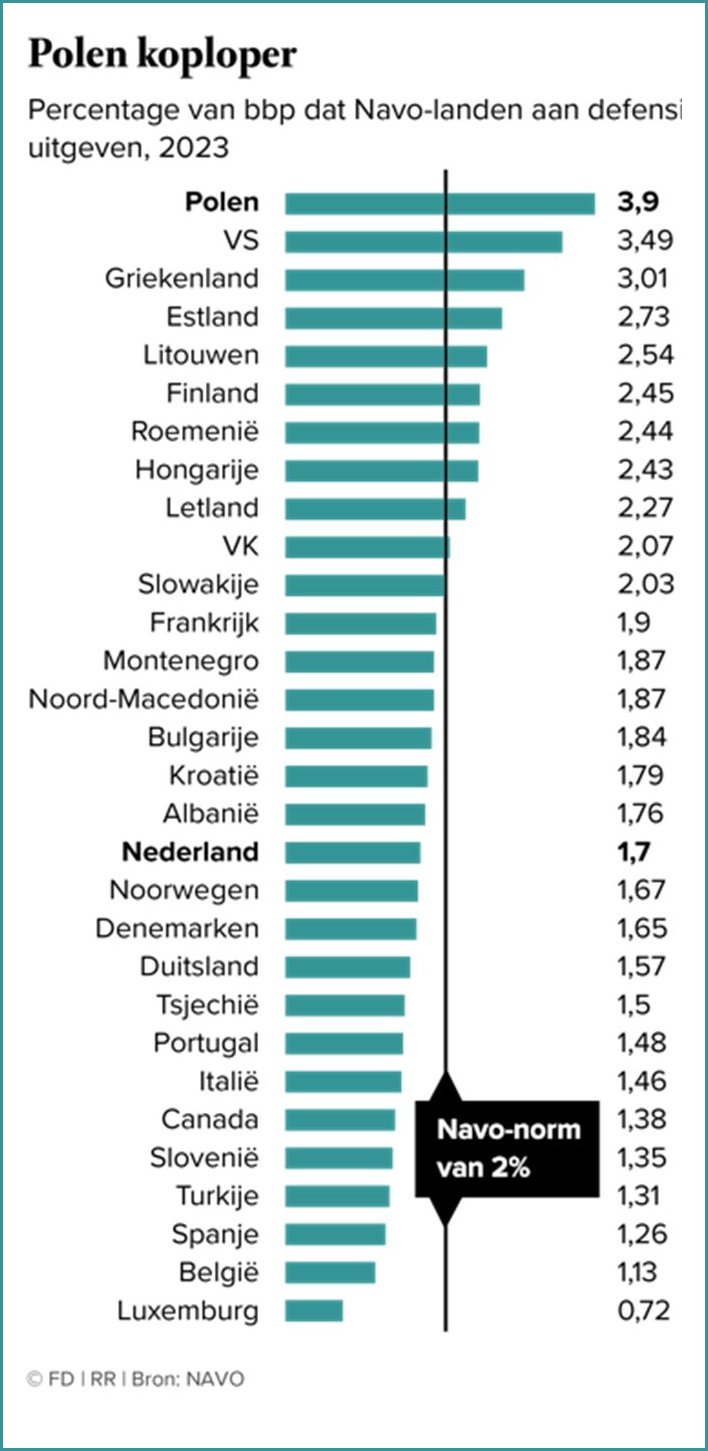
“The second factor was the budget problems caused by inflation and many other problems we had, and then the availability, that is, the liquid money, did not exist when those responsible for the endowment wanted to spend it, and in this way costs were actually incurred, but not incurred in the calendar year through December 31; many of them were incurred in early January and February. That’s why I say we don’t even need to do an accounting calculation. These expenditures were made in the year 2023, when they were recorded.
And finally, we have to admit that a factor that not only disturbed the endowments and spending on Defense, but in general also worried Romanians, was the high inflation we had last year. So these are the explanations, and I think it is good to know that we spent a lot of money on Defense, not to spend money, but to make Romania safer,” Iohannis further explained.
As DRN, we limit ourselves to the source and a periodic view because it may be considered known that the present figures are in constant flux and are therefore meant to be indicative. In doing so, we follow NATO’s criteria and do not describe (partial) country situations that make it impossible to compile an overview. In other words, we thus follow NATO’s definition
See how many MEPs will represent your country in June EU elections
The distribution of seats takes into account the size of the population of EU countries and the need for a minimum level of representation for EU citizens from smaller countries.
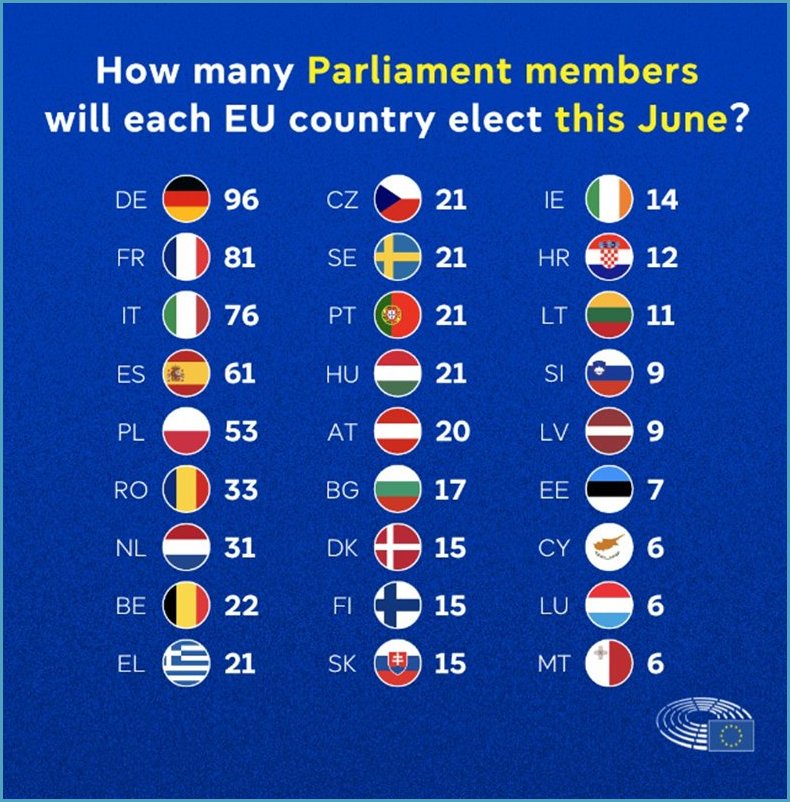
Special Messages
Post Craiova – Sustainability

Large multinationals have had to deal with it before and soon we at NetRom will too: mandatory reporting on your impact on people and the environment. Indeed, the Corporate Sustainability Reporting Directive (CSRD) will come into force for medium-sized companies starting this year.
The goal of CSRD? Forcing companies to take responsibility for their impact on society. Not just with some text on a website, but with hard, demonstrable proof.
Many business owners may see this as evidence of ever-increasing regulatory pressure and government patronization, but really that doesn’t matter much. It is regulated by law and if the obligation is there, in my personal belief, you had better embrace it and perhaps even try to become a forerunner. An example of its usefulness came to me recently when we participated in a public tender for DHL software development. One of the conditions for participation was a certificate from an independent “business sustainability rating” organization. So it does make sense (even commercially) to have your organization’s sustainability demonstrably in order.
At NetRom, we already do a lot in the area of sustainability, but it is not yet well mapped out. We are currently in the middle of the process of translating our activities into a professional CSRD report. CSRD embraces a total of 17 different focus areas, and organizations are free to focus on the topics of highest relevance.
An important element for NetRom is so-called chain liability. This means that companies are responsible not only for their own direct activities but also for the activities of the suppliers and subcontractors they work with. That’s pretty smart, because the economic relationship with suppliers allows you to get things done. Who pays, decides, you might say. This fact makes it interesting to also think carefully about what CSRD – in addition to a lot of hassle – might bring. Not only suppliers such as the aforementioned DHL, but also (potential) clients are – rightly – making more and more demands in terms of sustainability. After all, they too must demonstrate that suppliers in their supply chain operate sustainably with as little negative impact on people and the environment as possible.
Another key area of focus, which fits seamlessly with NetRom’s corporate philosophy of “employee first,” is gender equality. For an organization in the IT sector, NetRom employs a relatively high number of women. That has to do with the culture in Romania, where science subjects are hugely encouraged. From an early age, children are motivated to participate in math Olympiads, and both boys and girls are much more likely to choose to study science at university. A little side note: When my own children were 13 and 14, we moved from Romania back to Holland. They did not have to take math classes there for two years. I am not necessarily an advocate for the Romanian education system, but in the field of mathematics, there is definitely a great advantage. This beta focus is paying off favorably: in daily practice, I see many benefits of mixed teams. These are more balanced, have a nice atmosphere, perform better and work better together. A perfect example of how the pursuit of balance within our organization coincides with the fulfillment of new (CSRD) regulations.
Large multinationals have had to deal with it before and soon we at NetRom will too: mandatory reporting on your impact on people and the environment. Indeed, the Corporate Sustainability Reporting Directive (CSRD) will come into force for medium-sized companies starting this year.
The goal of CSRD? Forcing companies to take responsibility for their impact on society. Not just with some text on a website, but with hard, demonstrable proof.
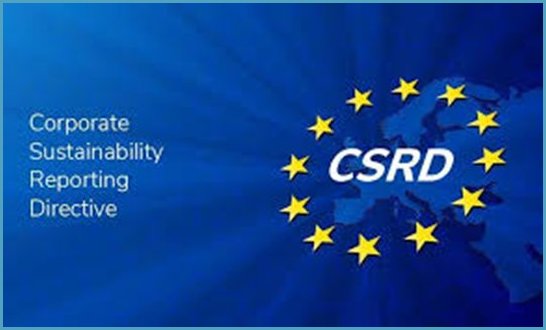 Many business owners may see this as evidence of ever-increasing regulatory pressure and government patronization, but really that doesn’t matter much. It is regulated by law and if the obligation is there, in my personal belief, you had better embrace it and perhaps even try to become a forerunner. An example of its usefulness came to me recently when we participated in a public tender for DHL software development. One of the conditions for participation was a certificate from an independent “business sustainability rating” organization. So it does make sense (even commercially) to have your organization’s sustainability demonstrably in order.
Many business owners may see this as evidence of ever-increasing regulatory pressure and government patronization, but really that doesn’t matter much. It is regulated by law and if the obligation is there, in my personal belief, you had better embrace it and perhaps even try to become a forerunner. An example of its usefulness came to me recently when we participated in a public tender for DHL software development. One of the conditions for participation was a certificate from an independent “business sustainability rating” organization. So it does make sense (even commercially) to have your organization’s sustainability demonstrably in order.
At NetRom, we already do a lot in the area of sustainability, but it is not yet well mapped out. We are currently in the middle of the process of translating our activities into a professional CSRD report. CSRD embraces a total of 17 different focus areas, and organizations are free to focus on the topics of highest relevance.
An important element for NetRom is so-called chain liability. This means that companies are responsible not only for their own direct activities, but also for the activities of the suppliers and subcontractors they work with. That’s pretty smart, because the economic relationship with suppliers allows you to get things done. Who pays, decides, you might say. This fact makes it interesting to also think carefully about what CSRD – in addition to a lot of hassle – might bring. Not only suppliers such as the aforementioned DHL, but also (potential) clients are – rightly – making more and more demands in terms of sustainability. After all, they too must demonstrate that suppliers in their supply chain operate sustainably with as little negative impact on people and the environment as possible.

Dacia-the glorious past of Romania
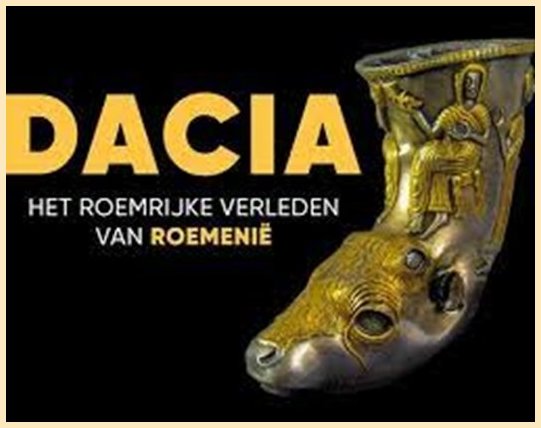 From July 7, 2024, the Drents Museum will present the major archaeology exhibition Dacia – Empire of Gold and Silver. More than fifty gold and silver treasures from Romania from the 20th century BC to the 3rd century AD are coming to Assen. Most of it predates the Roman conquest (106 AD). With Dacia, the Drents Museum tells the story of the Dacians, one of the “forgotten peoples” of world history. The
From July 7, 2024, the Drents Museum will present the major archaeology exhibition Dacia – Empire of Gold and Silver. More than fifty gold and silver treasures from Romania from the 20th century BC to the 3rd century AD are coming to Assen. Most of it predates the Roman conquest (106 AD). With Dacia, the Drents Museum tells the story of the Dacians, one of the “forgotten peoples” of world history. The exhibition will be on display at the Drents Museum through Jan. 26, 2025. In the 2nd century BC, the Dacians inhabited much of present-day Romania, Dacia. The unique geographical location – between the Eurasian steppe to the east, the Mediterranean world to the south and Central Europe to the west – makes the area a crossroads of cultures. Greeks, Celts, Thracians, Scythians and Persians all had their influence on the Dacians, and elements of these different cultures can therefore be found in the objects. The Romans also took great interest in Dacia. They devoted two battles to it before finally conquering the struggling nation in 106 A.D. In Dacia – Empire of Gold and Silver, the museum focuses on the period before this conquest. At the center are the identity of the Dacians and the impressive gold and silver treasures.
exhibition will be on display at the Drents Museum through Jan. 26, 2025. In the 2nd century BC, the Dacians inhabited much of present-day Romania, Dacia. The unique geographical location – between the Eurasian steppe to the east, the Mediterranean world to the south and Central Europe to the west – makes the area a crossroads of cultures. Greeks, Celts, Thracians, Scythians and Persians all had their influence on the Dacians, and elements of these different cultures can therefore be found in the objects. The Romans also took great interest in Dacia. They devoted two battles to it before finally conquering the struggling nation in 106 A.D. In Dacia – Empire of Gold and Silver, the museum focuses on the period before this conquest. At the center are the identity of the Dacians and the impressive gold and silver treasures.
Gold and silver
The wealth of natural resources ensures that Romania has traditionally had an important function. 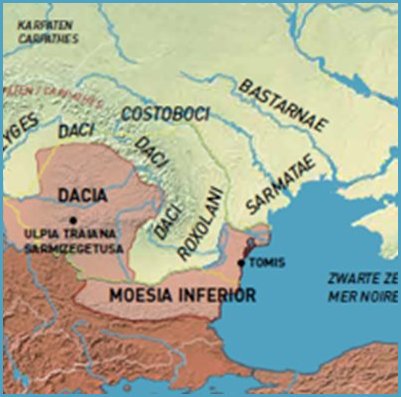 Thanks to the presence of gold mines, the inhabitants of Dacia achieve a very high level of processing of precious metals both technically and artistically. The objects were used during religious rituals or were sacrificed, such as the solid gold bracelets from the Sarmizegetusa Regia, then the capital of the Dacian empire. Some of the gold and silver treasures have been discovered in recent years and have never before been displayed in a museum.
Thanks to the presence of gold mines, the inhabitants of Dacia achieve a very high level of processing of precious metals both technically and artistically. The objects were used during religious rituals or were sacrificed, such as the solid gold bracelets from the Sarmizegetusa Regia, then the capital of the Dacian empire. Some of the gold and silver treasures have been discovered in recent years and have never before been displayed in a museum.
Objects from Romanian museums
The more than 500 objects of gold and silver treasures come from at least 15 different museums across Romania. For the exhibition, the Drents Museum is collaborating with the National History Museum of Romania. Director Dr. Ernest Öberlander-Târnoveanu is guest curator of Dacia.
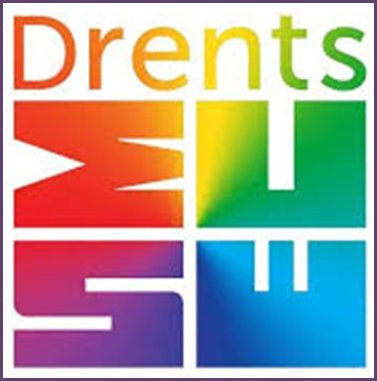 Dacia – Empire of Gold and Silver will be on view from July 7, 2024 through Jan. 26, 2025, and fits into the series of exhibitions on international archaeology, such as Iran – Cradle of Civilization (2018), Under the spell of the Ararat – Treasures from Ancient Armenia (2022) and Dying in Beauty – The World of Pompeii and Herculaneum (2022). The exhibition will be accompanied by an in-depth publication with contributions from several Romanian archaeologists.
Dacia – Empire of Gold and Silver will be on view from July 7, 2024 through Jan. 26, 2025, and fits into the series of exhibitions on international archaeology, such as Iran – Cradle of Civilization (2018), Under the spell of the Ararat – Treasures from Ancient Armenia (2022) and Dying in Beauty – The World of Pompeii and Herculaneum (2022). The exhibition will be accompanied by an in-depth publication with contributions from several Romanian archaeologists.
Dutch Language and Culture School (NTC) in Bucharest celebrates 15-year anniversary
The school known as “The Migratory Bird” is celebrating its third anniversary this year and wants to give some publicity to it, so that the number of students increases and what therefore creates more opportunities. For school-age children in Bucharest and surrounding areas, it can be an attractive option for parents.
Since 2009, this school has been providing language and cultural education to Dutch and Flemish children ages 4 to 12 (groups 1 to 8).
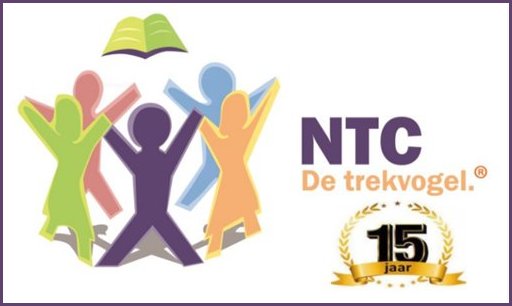 Since March 2020, beginning of Covid, “The Migratory Bird” is 100% hybrid, which means that the children can attend classes on site but also simultaneously via zoom from all over Romania, Moldova and Serbia. The Dutch Language and Culture School “The Migratory Bird” in Bucharest is an NTC site in the American International School of Bucharest. (Www.aisb.ro)
Since March 2020, beginning of Covid, “The Migratory Bird” is 100% hybrid, which means that the children can attend classes on site but also simultaneously via zoom from all over Romania, Moldova and Serbia. The Dutch Language and Culture School “The Migratory Bird” in Bucharest is an NTC site in the American International School of Bucharest. (Www.aisb.ro)
The goal is to prepare students as well as possible for a return to the Netherlands or Flanders. The subject matter is therefore closely aligned with education in the Netherlands and Flanders.
The curriculum complements the teaching of the day school and therefore takes place outside regular school hours; in the afternoon. There are also a few Saturday activities.
The NTC school in Bucharest is under inspection by the Ministry of Education, Culture and Science and is a member of the Dutch Education Abroad Foundation (NOB).
For more information: www.ntcboekarest.nl or contact director and teacher jan.struys@ntcboekarest,nl
ZF Agropower. Women in agribusiness
They have greater bargaining power, they act emotionally and not necessarily according to the business plan, and they pay more attention to details, while men pay more attention to big decisions. In Romania, out of 2.88 million farms, about 1.1 million.
♦ In Romania, of the 2.88 million farms, about 1.1 million, or 37%, are owned by women. Compared to other EU countries, Romania is the best in this regard as it has by far the largest number of farms.
♦ Of the 12.7 million hectares of agricultural land, only 3.1 million hectares are worked by women, about 25%, and of the annual production generated by agriculture, of 13 billion euros, only 20% is generated by women
♦ Motivating women farmers through equal access to resources and opportunities could increase food production by 10-15%, meaning food could be provided for another According to United Nations data, there are 100 to 150 million people worldwide.
 They studied economics, law and marketing, but the “voice of the earth,” which Liviu Rebreanu wrote about more than a century ago, is the one that spoke to them and made them stay in agriculture, Cristina Dîrjan, who currently works in agriculture. Lavender, mint, sage and rowan in Sălaj, where she produces natural cosmetics, Jessica Pop, who joined her father’s poultry farm in Bihor, and last year set up her own grain farm, and Mădălina Giurescu, who specializes in growing sea buckthorn and its processed products, which even reach South Korea.
They studied economics, law and marketing, but the “voice of the earth,” which Liviu Rebreanu wrote about more than a century ago, is the one that spoke to them and made them stay in agriculture, Cristina Dîrjan, who currently works in agriculture. Lavender, mint, sage and rowan in Sălaj, where she produces natural cosmetics, Jessica Pop, who joined her father’s poultry farm in Bihor, and last year set up her own grain farm, and Mădălina Giurescu, who specializes in growing sea buckthorn and its processed products, which even reach South Korea.
“For us, everything started by accident. I read and saw the properties of lavender and decided to bring it into our home. We started with lavender and then expanded it. Agriculture chose us and not the other way around, and it was a gradual emergence in this field,” says Cristina Dîrjan, economist by profession, who founded the company Agro Team Dîrjan in 2014. She attended the ZF Agropower show, a project supported by Banca Transilvania and Penny.
“Home” for Cristina Dîrjan is Fetindia, a place in the municipality of Meseşenii de Jos in Sălaj province, where her parents lived during the time she worked with her husband in Italy. First they bought a piece of land since they were in Italy, and in 2014 they returned for good and invested about 150,000 euros in machinery, land, planting material for lavender, walnut and hazelnuts, documents and processing space, with money I earned in 15 years working in Italy. “Everything to do with crops is under the care of my husband, who takes home the raw materials and I take care of the processing,” Cristina Dîrjan explains, stressing that things are very well defined.
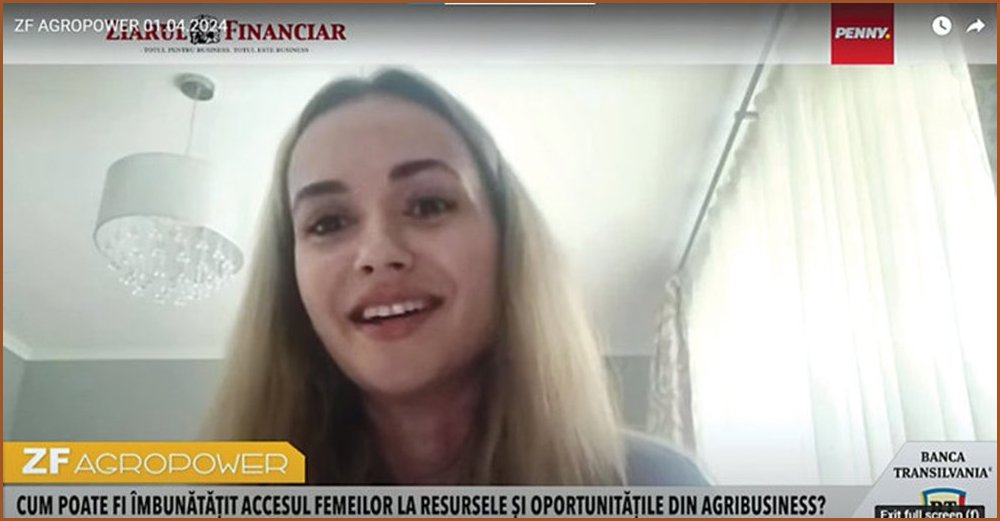
Jessica Pop joined her father’s poultry farm in Bihor and last year set up her own grain farm
Also by chance, in his opinion fortunately, Jessica Pop, a young lawyer, ended up in agriculture. “In high school, I wanted to choose a different path than my parents, but in the second year of college, I realized that the law is rigid, while agriculture offers me more opportunities. I chose farming for a trial period, to help my parents, and I have been working with them for over four years,” she says. Her father owns a poultry farm and Jessica Pop has established a grain farm in Suplacu de Barcău in Bihor province.
Jessica Pop believes agriculture is a field with growth potential and is more beautiful than it appears from the outside. ‘Although I was told in the beginning that it is a greater pride to be a lawyer, judge or prosecutor, I can now say the opposite. For me, being a farmer’s wife is a great pride and I think the financial opportunities are greater than in the legal field,” she affirms.
Mădălina Giurescu, with studies in marketing, was co-opted into agriculture by her brother, with whom she had the first association, and in 2016 she founded the Bio Cătina Agricultural Cooperative, now composed of farmers from Vâlcea provinces. , Dâmboviţa, Vaslui, Buzău, Olt, Constanţa, Arad and Călăraşi, cultivating a total of about 200 hectares with buckthorn.
Mădălina Giurescu specialized in growing sea buckthorn and its processed products: More women should be involved in farming because you quickly get the satisfaction of the work.
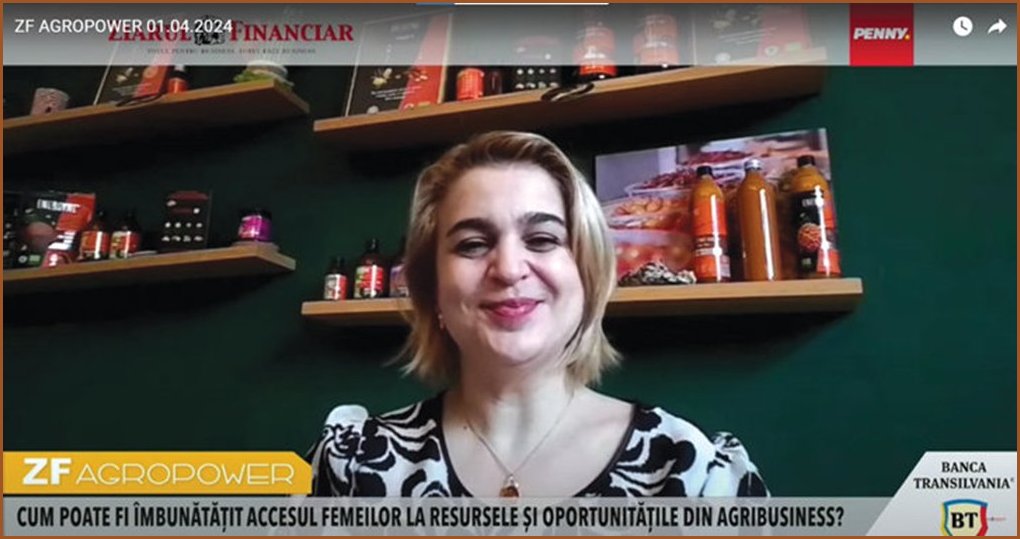
“I got into this field because of my passion for buckthorn, the desire to do something and the call of Rebreanu’s land. I started the company together with my brother and then created the core of the cooperative, which was accompanied by the challenges of the market and the times we live in, because it is not easy, but also not impossible,” said Mădălina Giurescu.
The three guests at the ZF Agropower believe that this field is dominated by men, percentage-wise, in terms of the activity itself, but also the fact that women continue to devote themselves more to family than career.
What are the benefits of women choosing agriculture?
“For me, during a negotiation, being a woman was an advantage,” say Mădălina Giurescu and Jessica Pop. The latter adds that her law degree is a great advantage in any discussion, but her youth a disadvantage. “Some people are skeptical about working with someone with so little experience.”
United Nations data show that motivating farmers to have equal access to resources and opportunities in agriculture could increase food production by 10-15%, meaning an additional 100-150 million people could be fed worldwide. According to the most recent Eurostat data, women in Romania generate about 20% of agricultural production, or €13 billion a year. Moreover, of the 12.7 million hectares of farmland, only 3.1 million hectares are worked by women, about 25%.
How do women behave in business and agriculture?
“Women sometimes act emotionally and not necessarily according to the business plan. This can be good or bad. When you are emotional, you also think about the impact of your decision on people, on the environment – we do ecological farming – and on plants.  Next, as a structure, women are more analytical and pay more attention to details, and so a company run by a woman differs from one run by a man, who uses logic and is more decisive, because he pays more attention to big decisions than to small ones,” Mădălina Giurescu said. Cristina Dîrjan also agrees that women pay more attention to details, they look at everything from an emotional perspective, but also from the perspective of business structure.
Next, as a structure, women are more analytical and pay more attention to details, and so a company run by a woman differs from one run by a man, who uses logic and is more decisive, because he pays more attention to big decisions than to small ones,” Mădălina Giurescu said. Cristina Dîrjan also agrees that women pay more attention to details, they look at everything from an emotional perspective, but also from the perspective of business structure.
Mădălina Giurescu also said that if she had two resumes in front of her, one from a man and one from a woman, who had the same skills, she would choose to hire a woman because she is more diligent and does more for the company. Moreover, she believes that more women should be involved in agriculture because you quickly get the satisfaction of work.
“I got into this field thanks to my parents, especially my father, who is a veterinarian and has supported me for four years to work together. My mother is a livestock engineer and she didn’t have the same opportunities as me. When she finished college, she was not encouraged to work in this field, despite the fact that she really liked it. Since then, things have changed and the field is now perceived differently by young people, and in 10-15 years my children will perceive it even better,” Jessica Pop said.
Disclaimer

The newsletter of the Dutch Romanian Network is compiled with great care. The Dutch Romanian Network cannot accept any liability for a possible inaccuracy and/or incompleteness of the information provided herein, nor can any rights be derived from the content of the newsletter. The articles do not necessarily reflect the opinion of the board.
